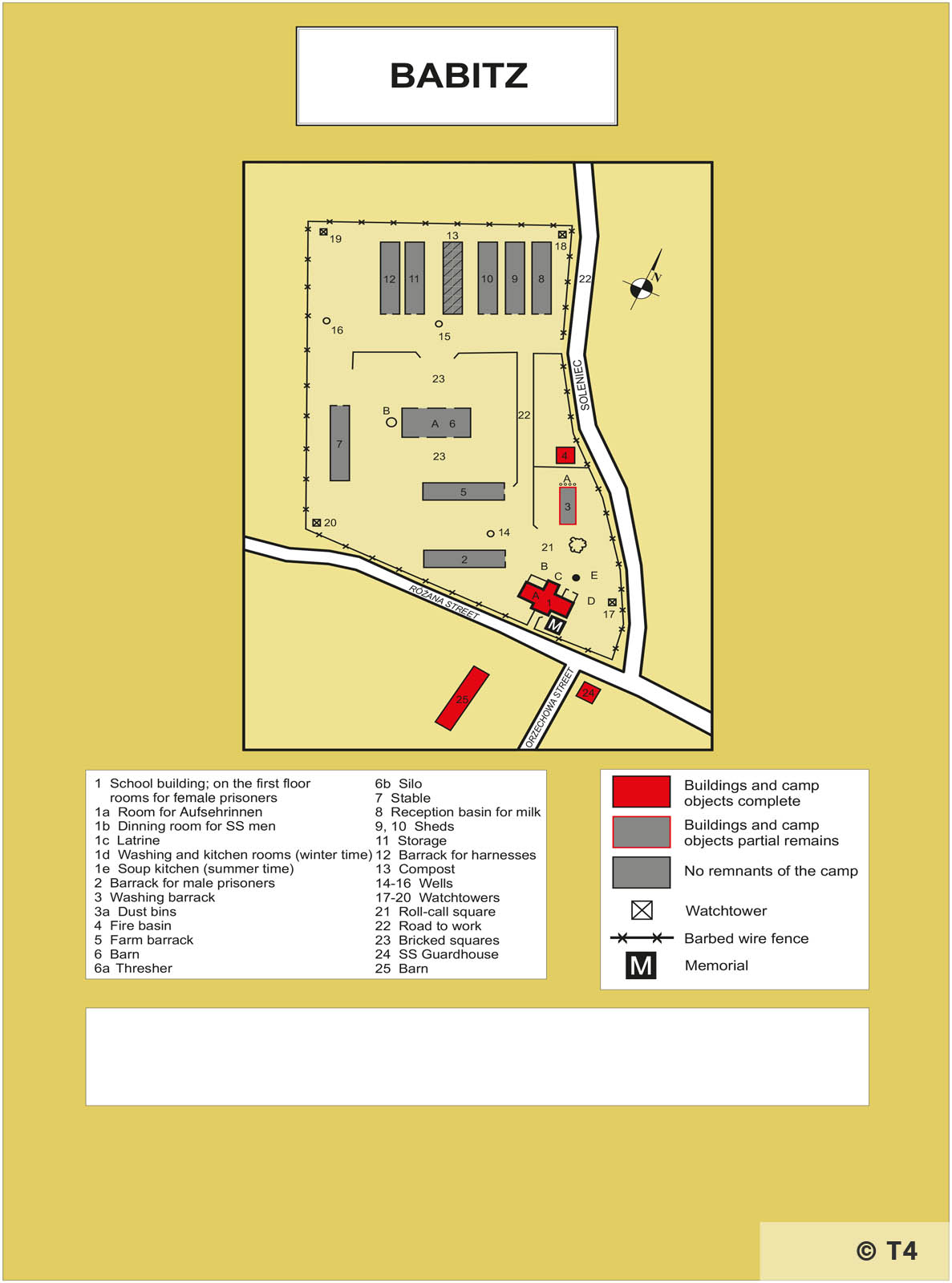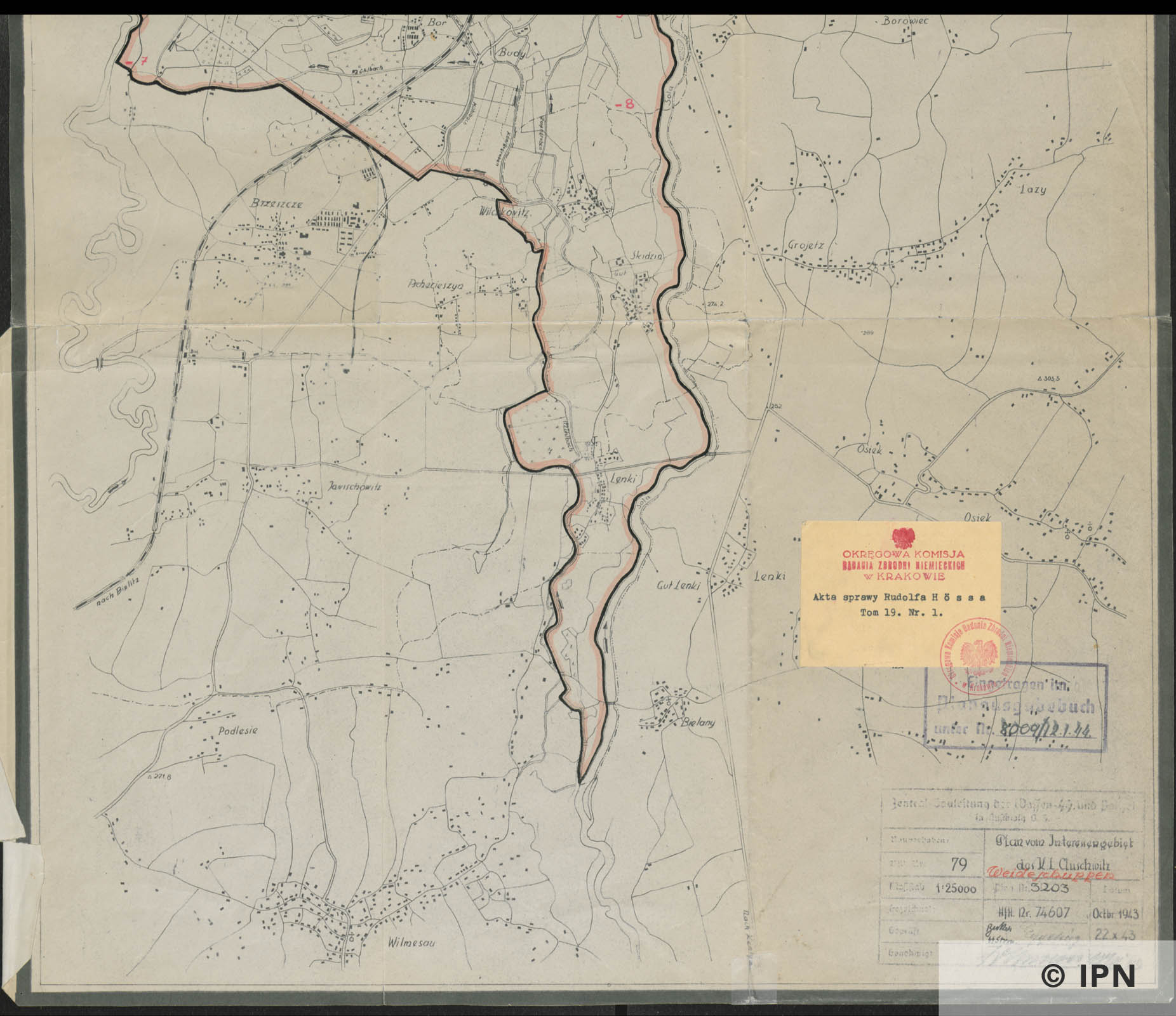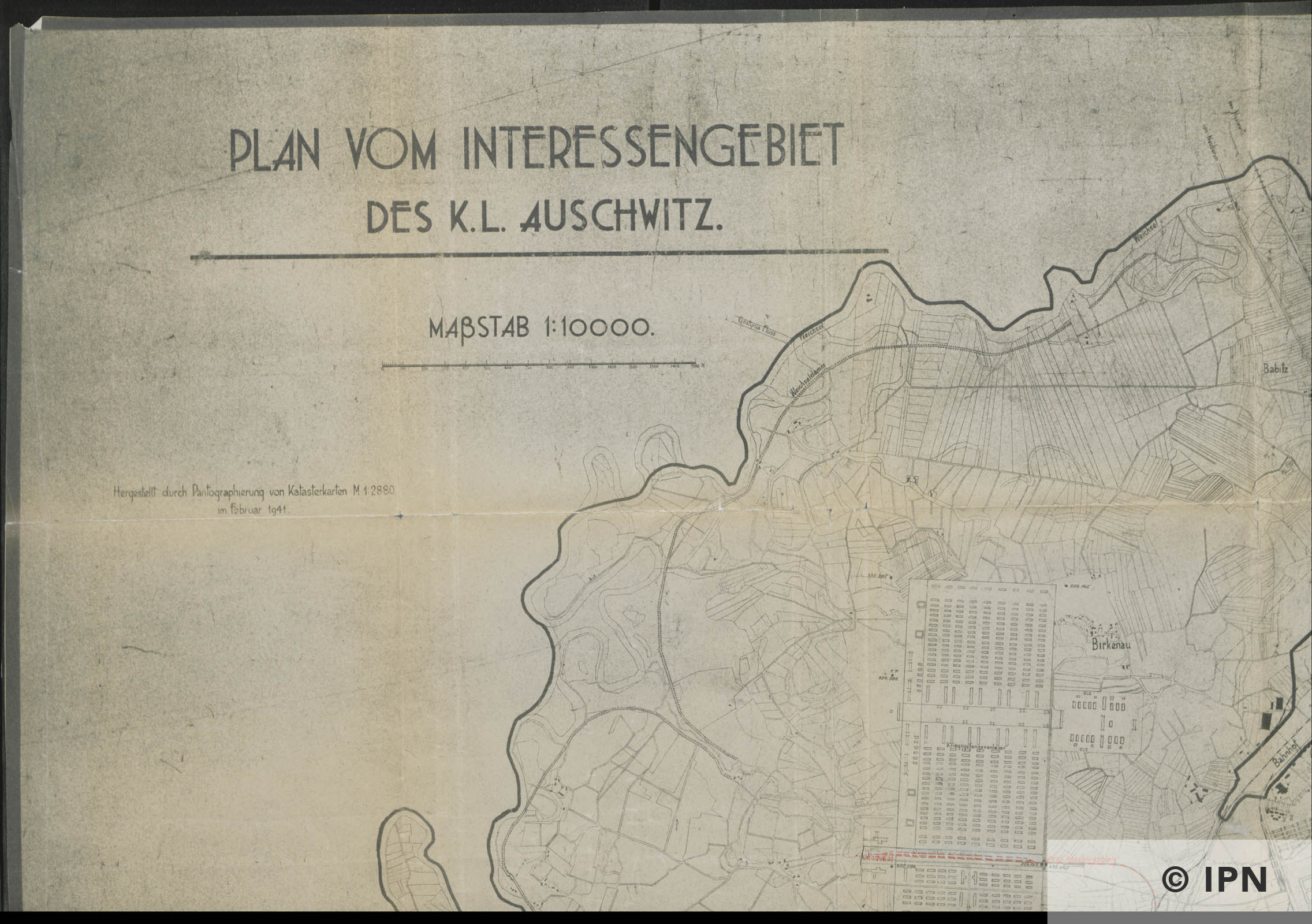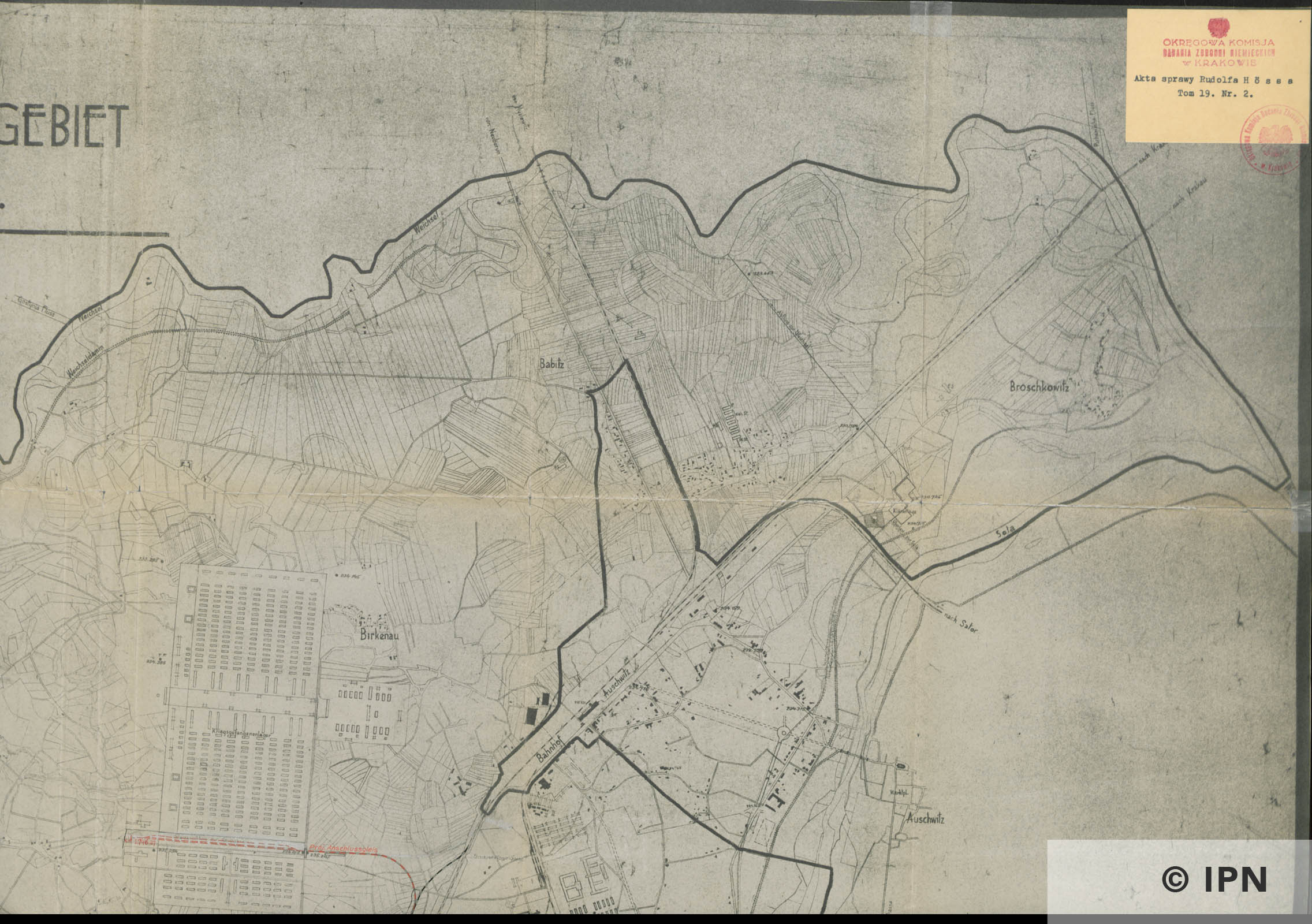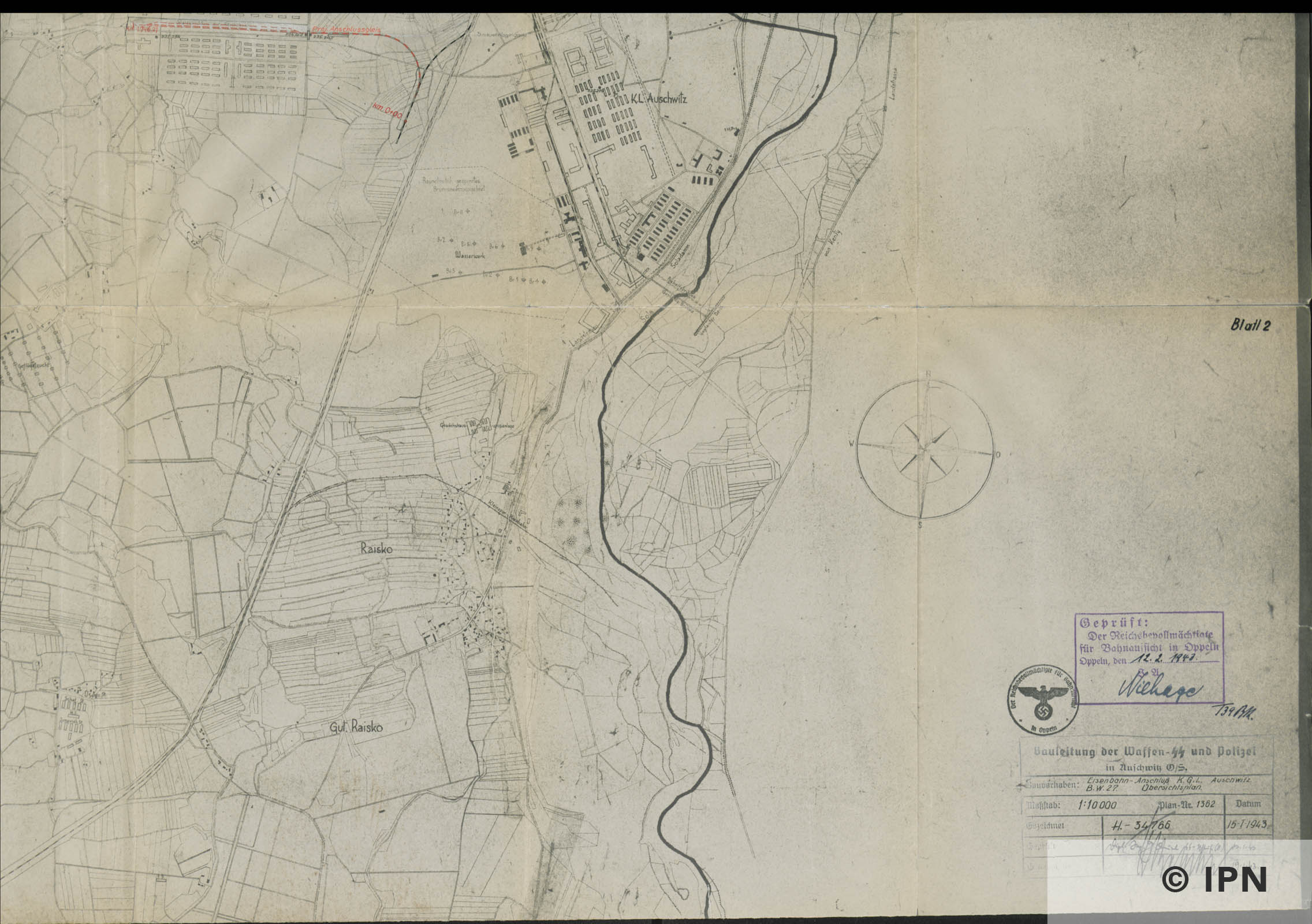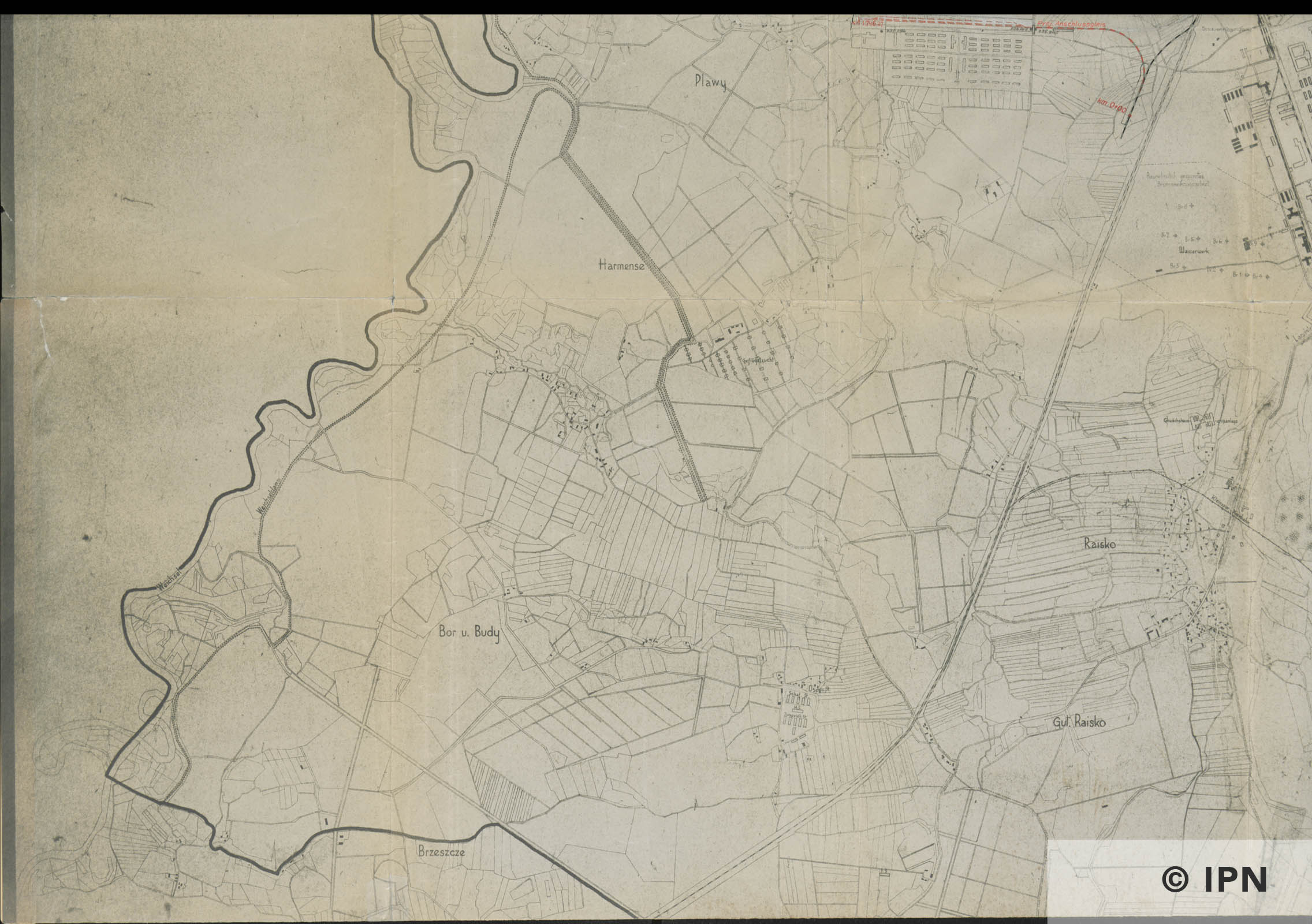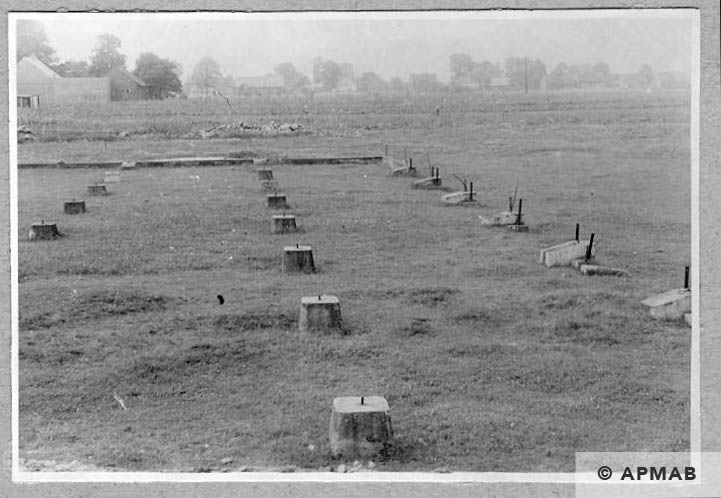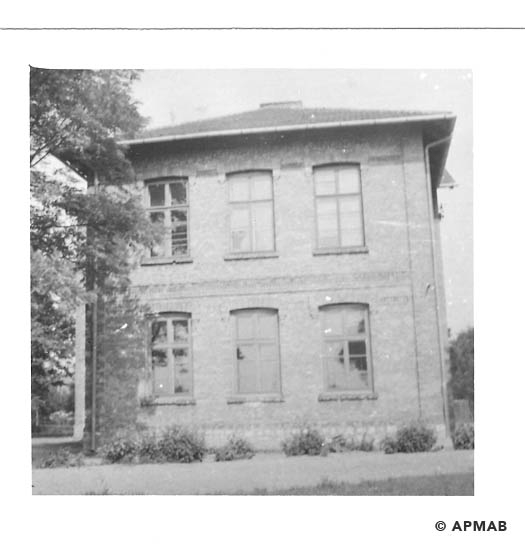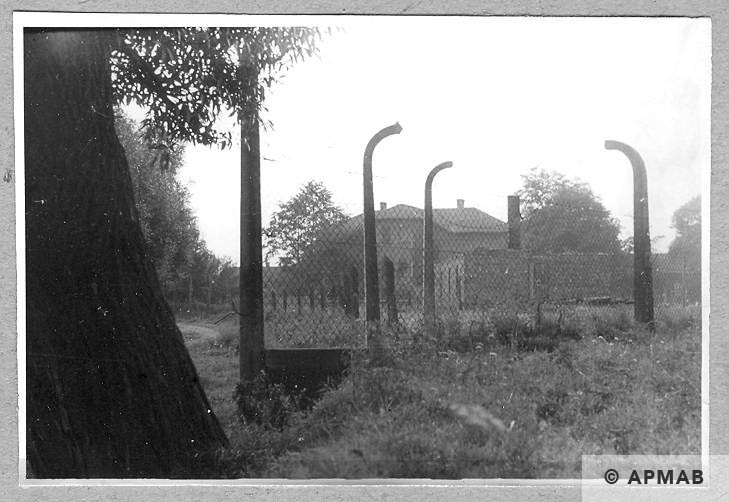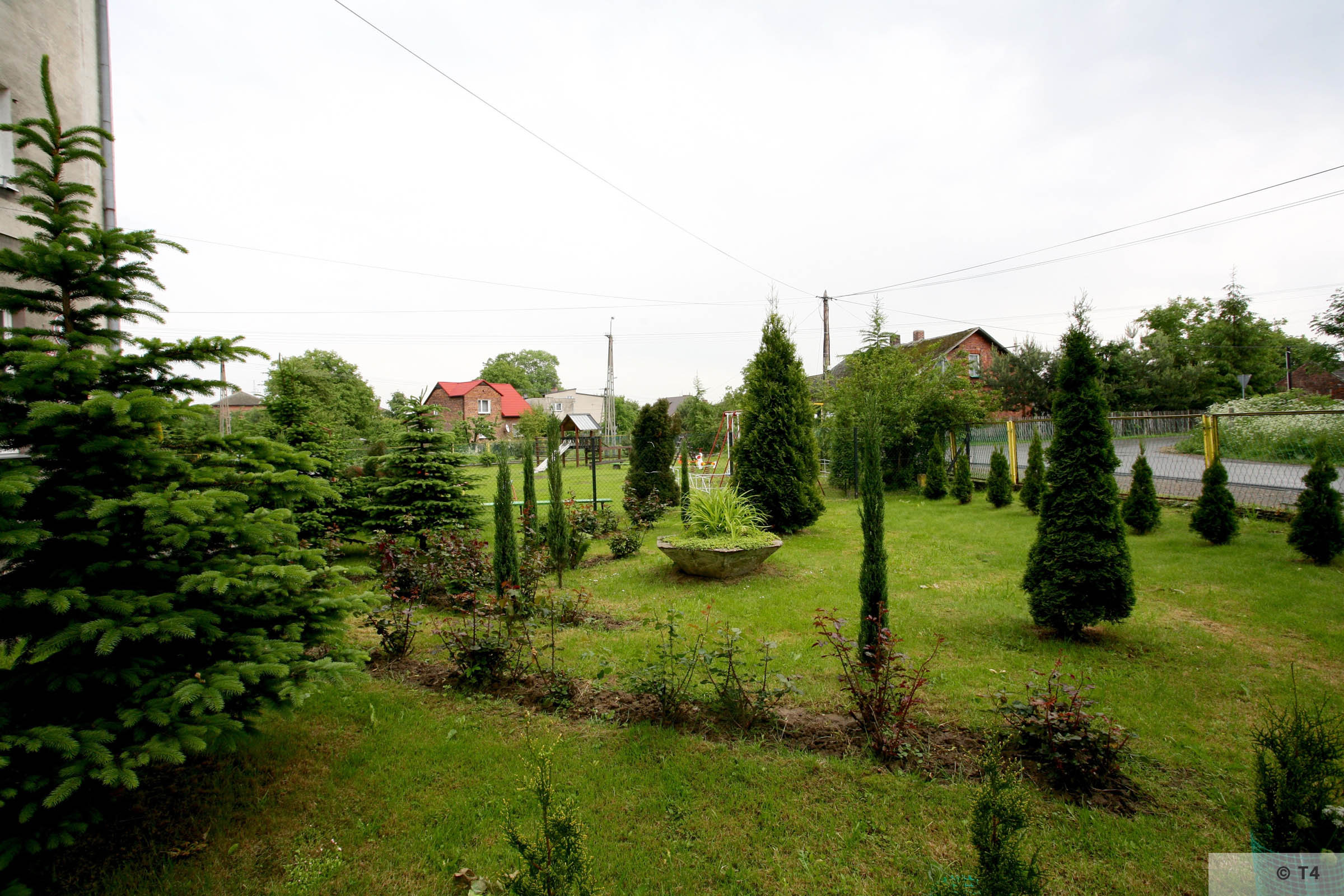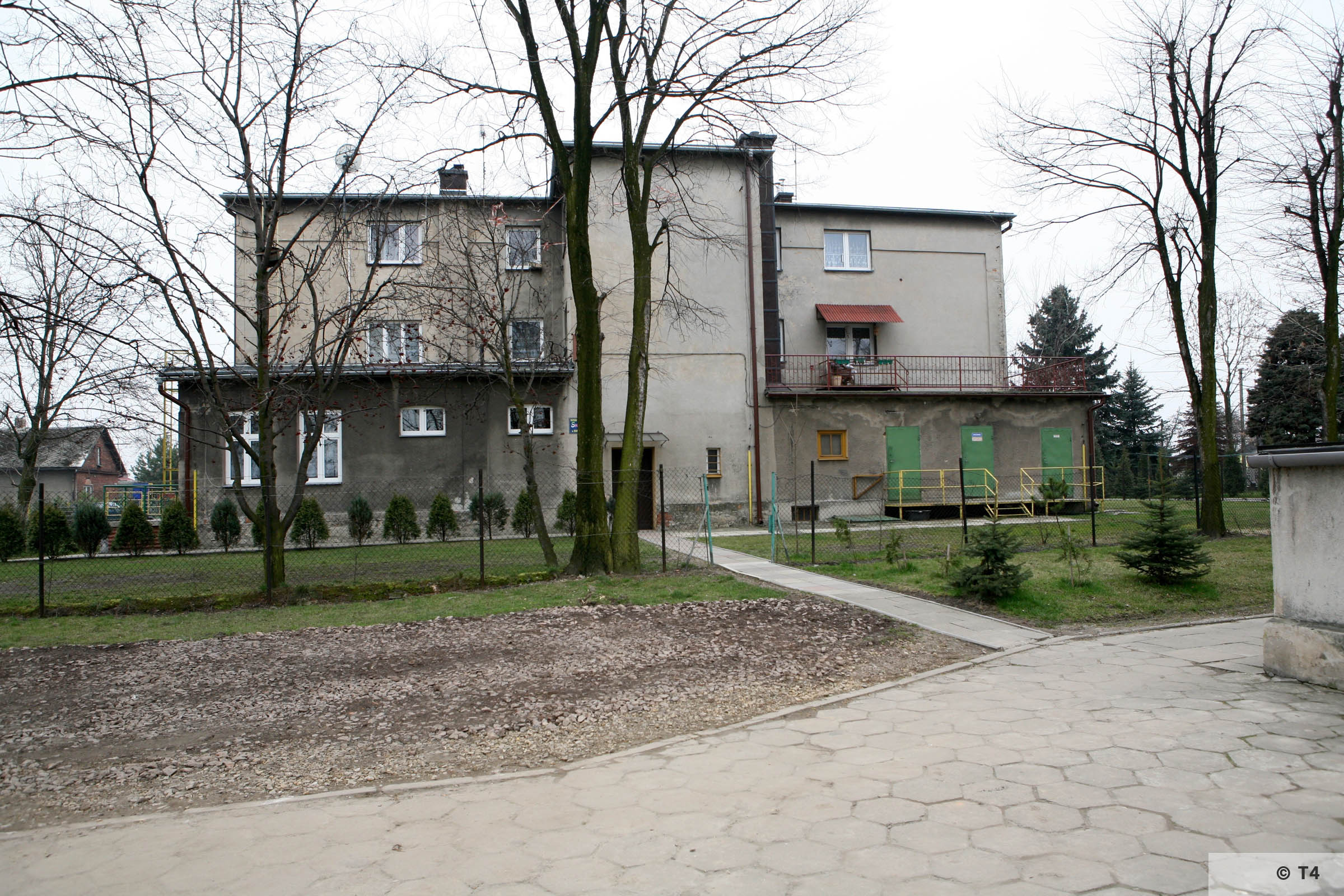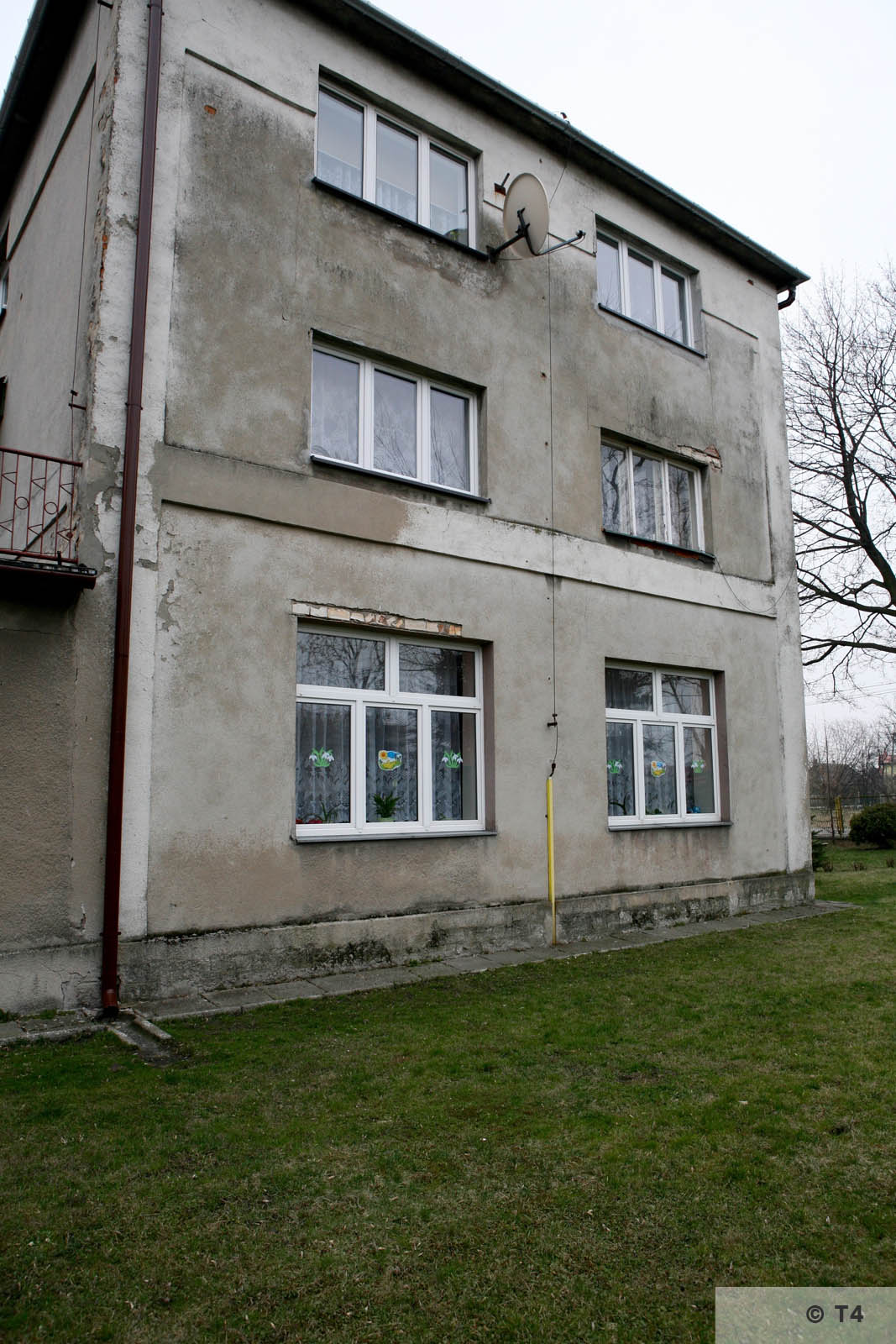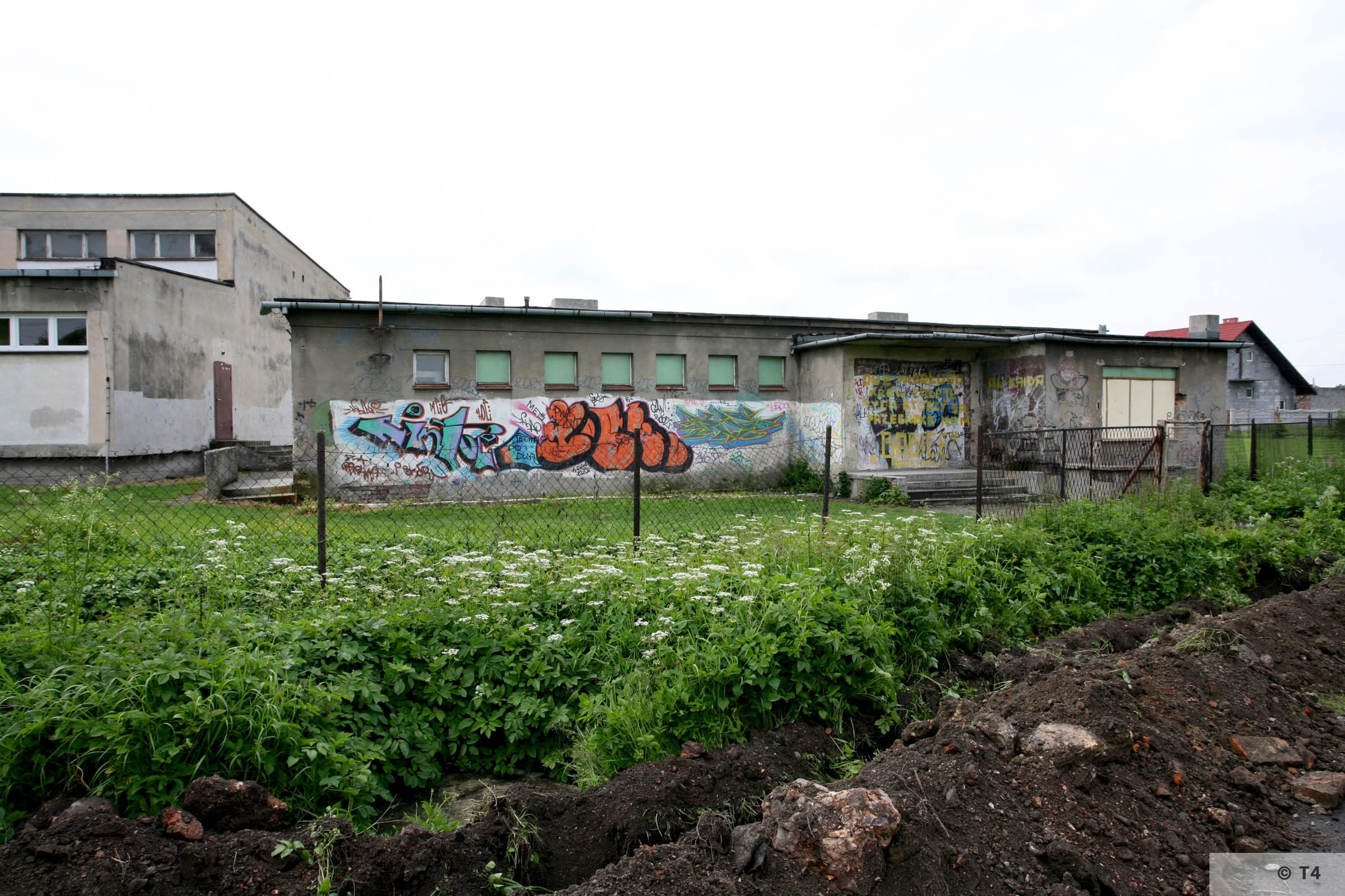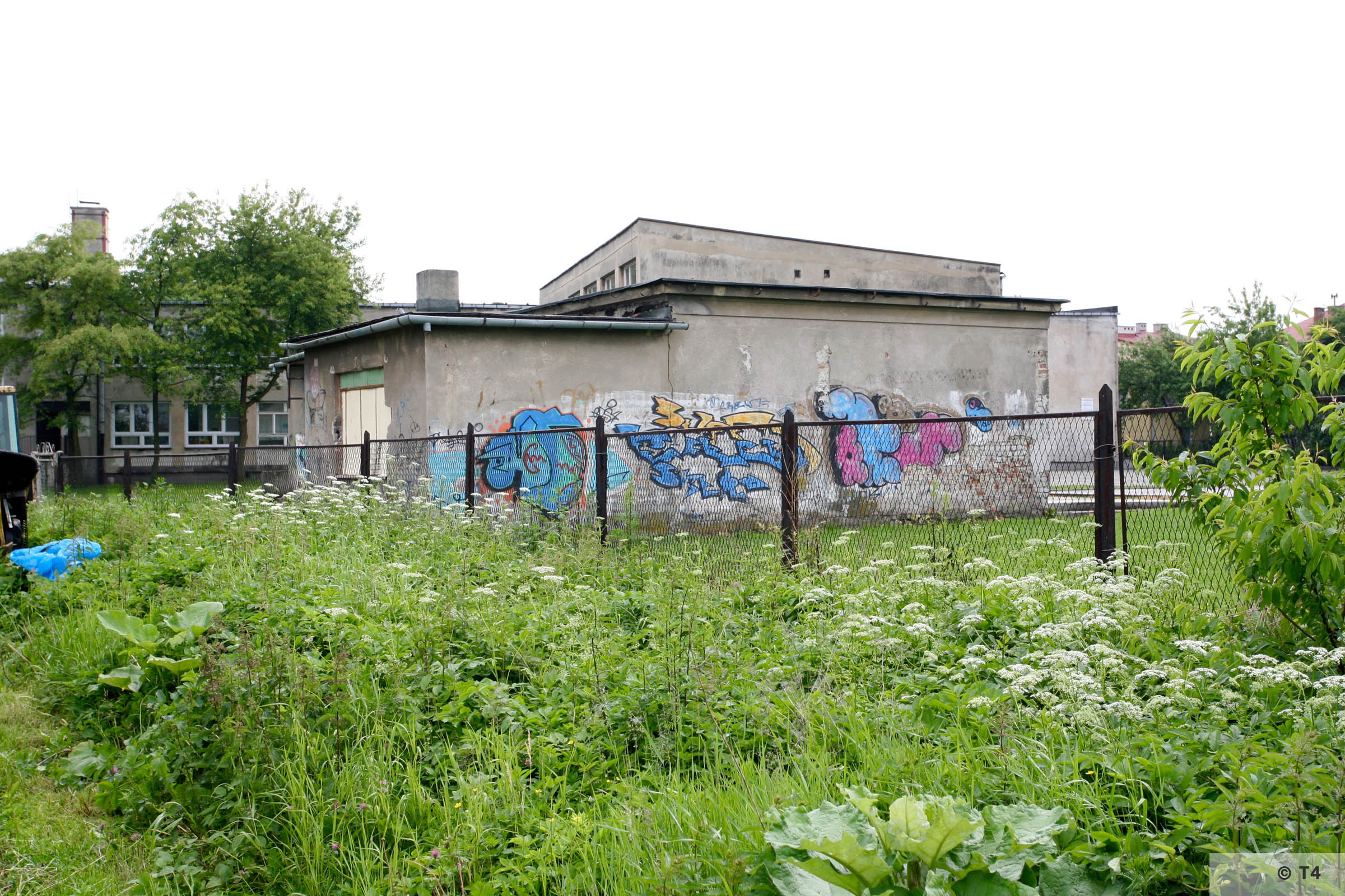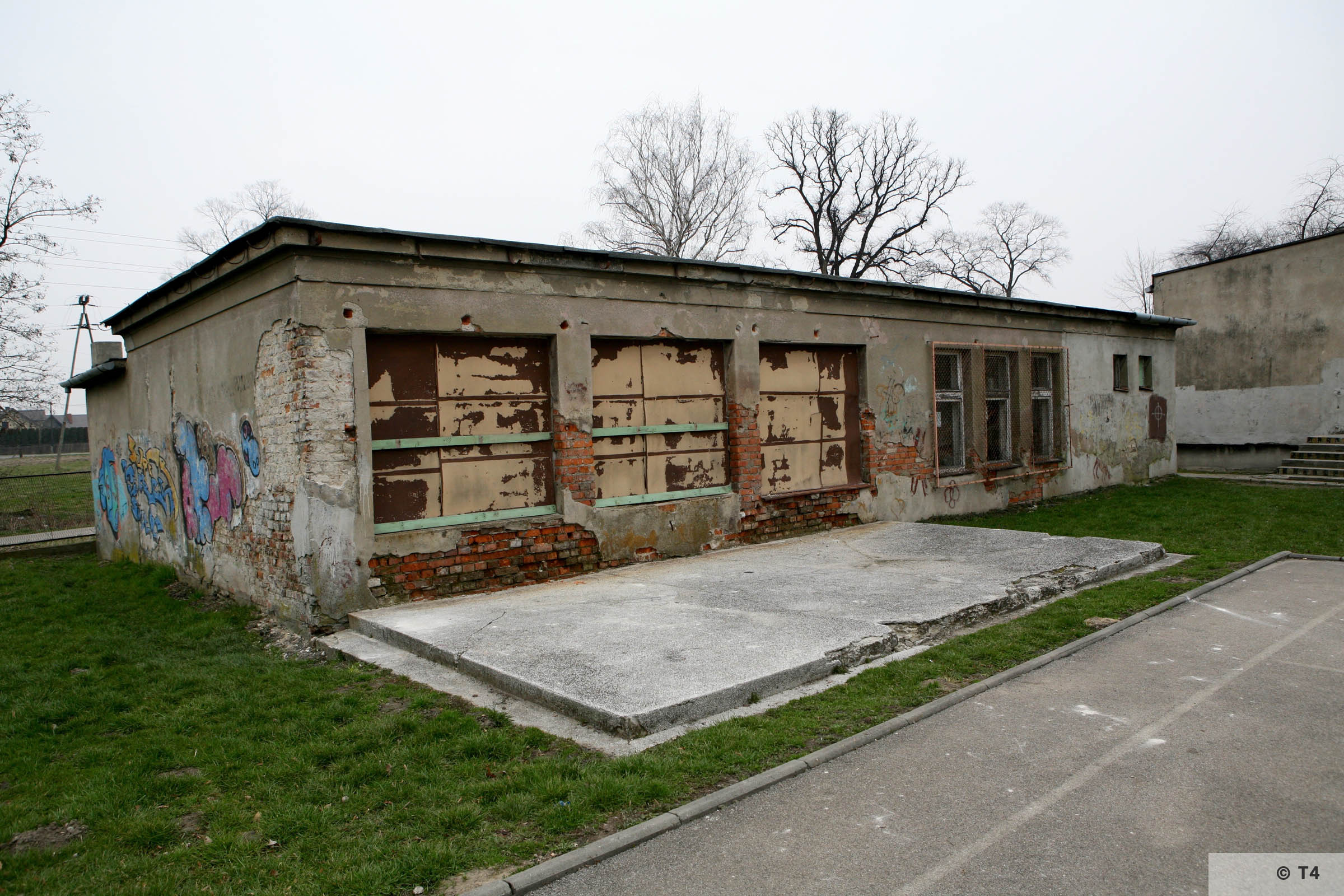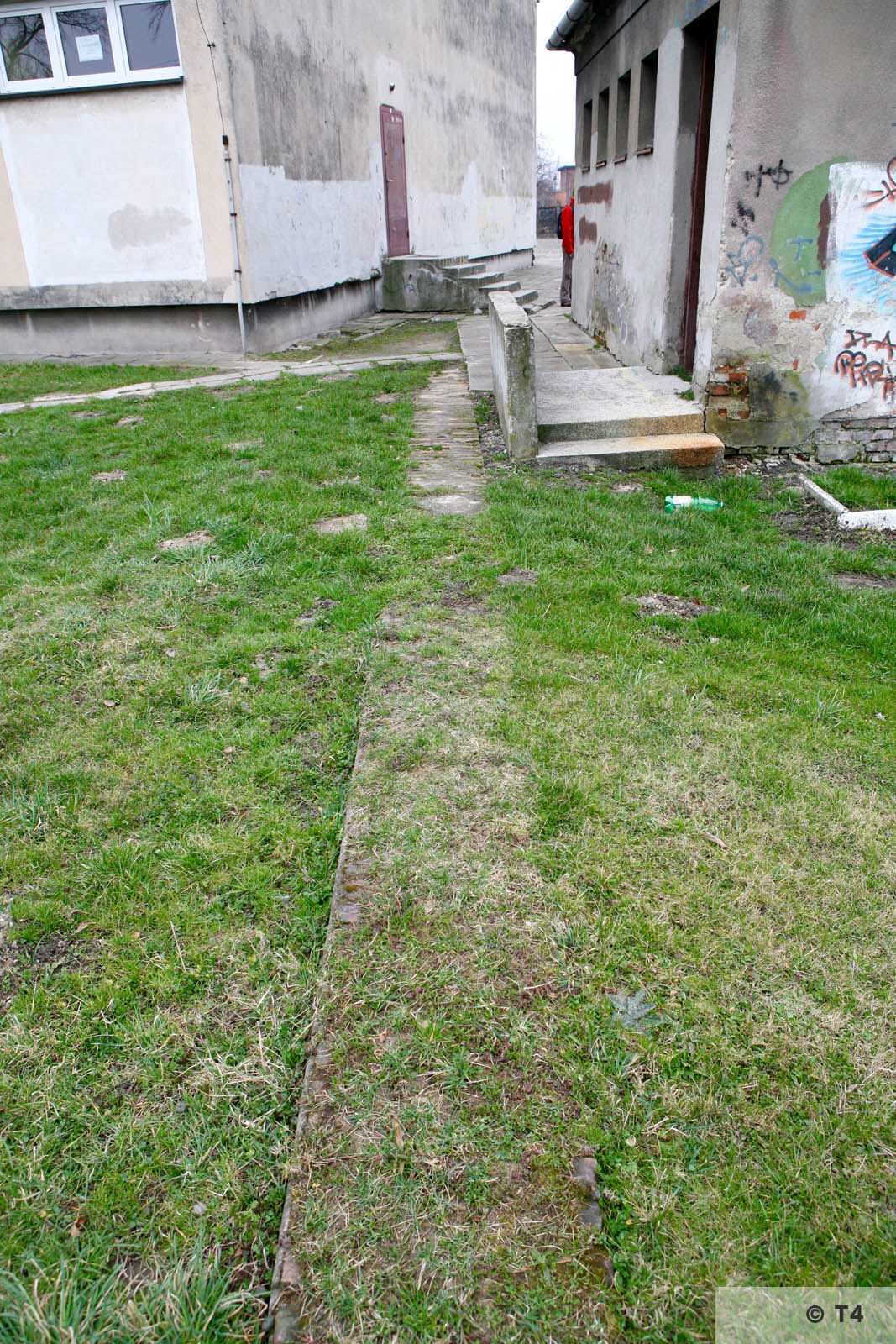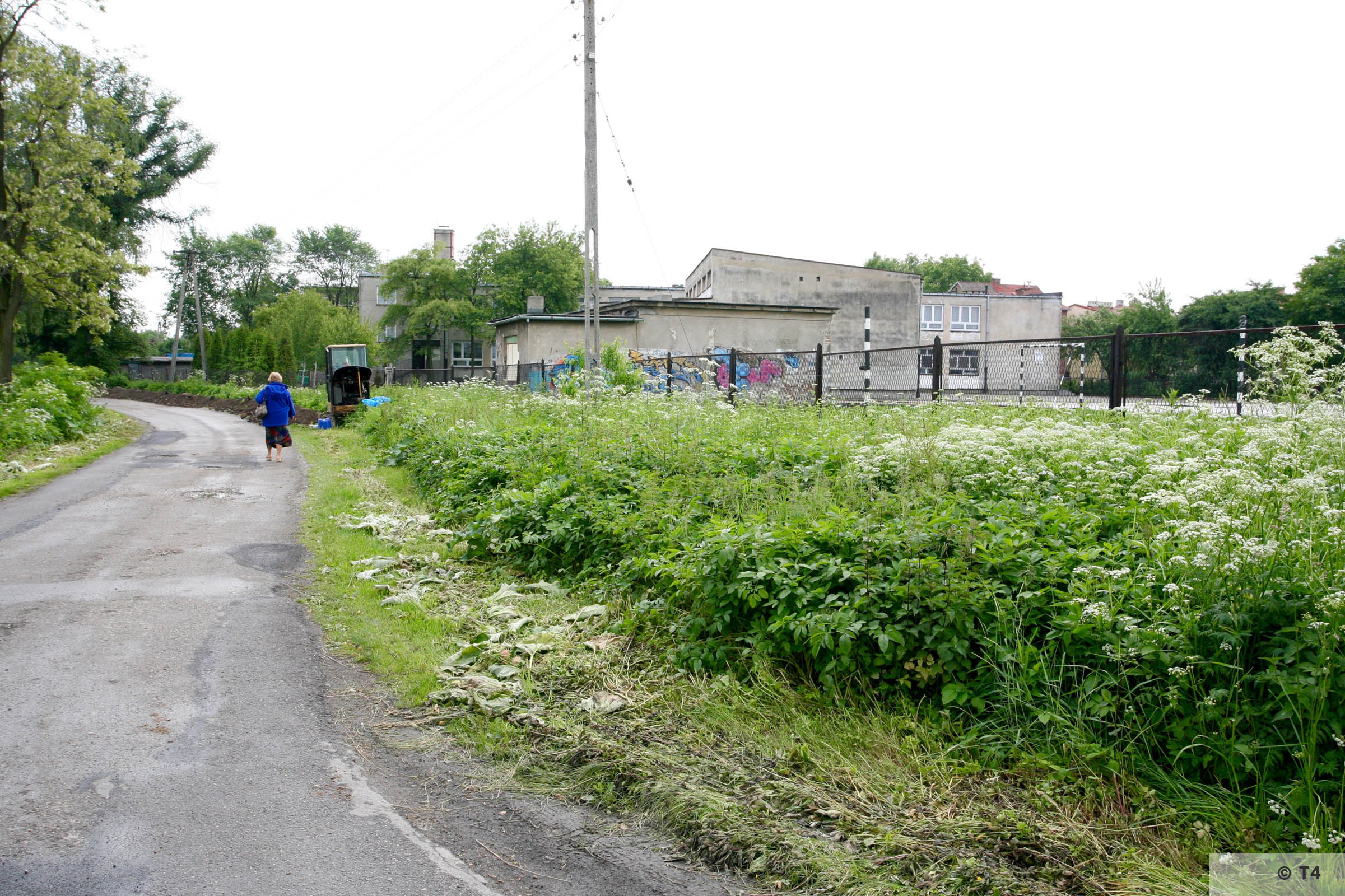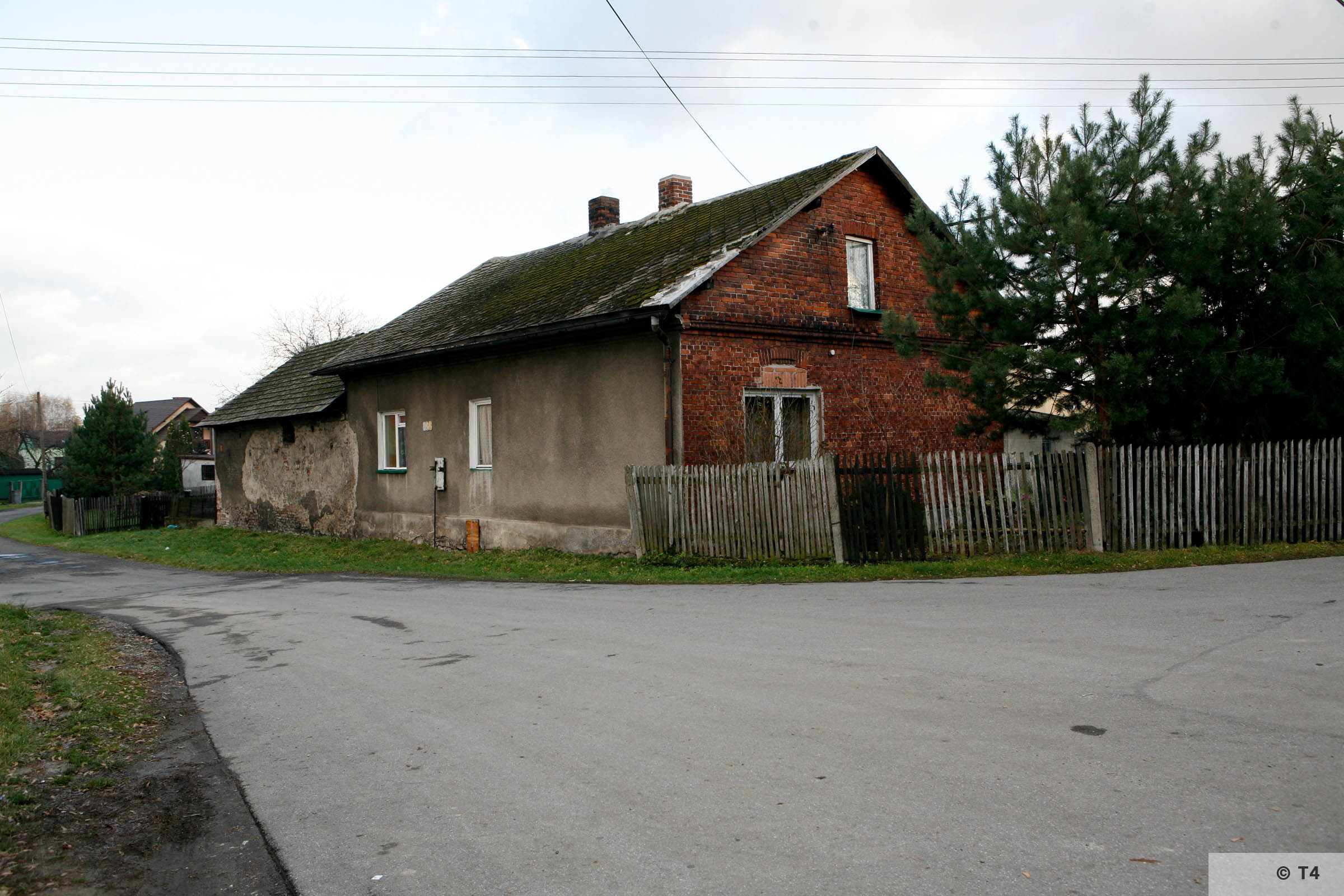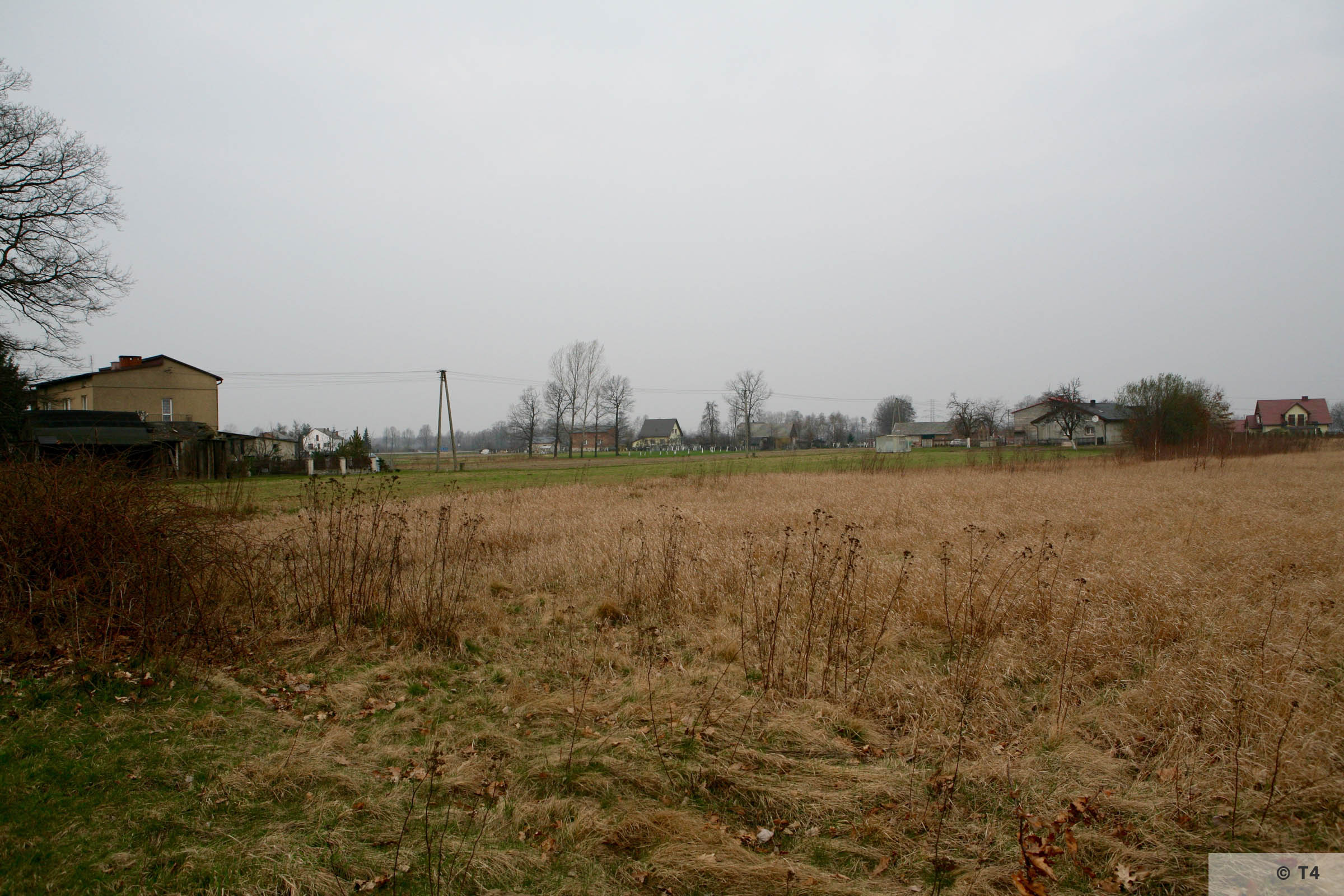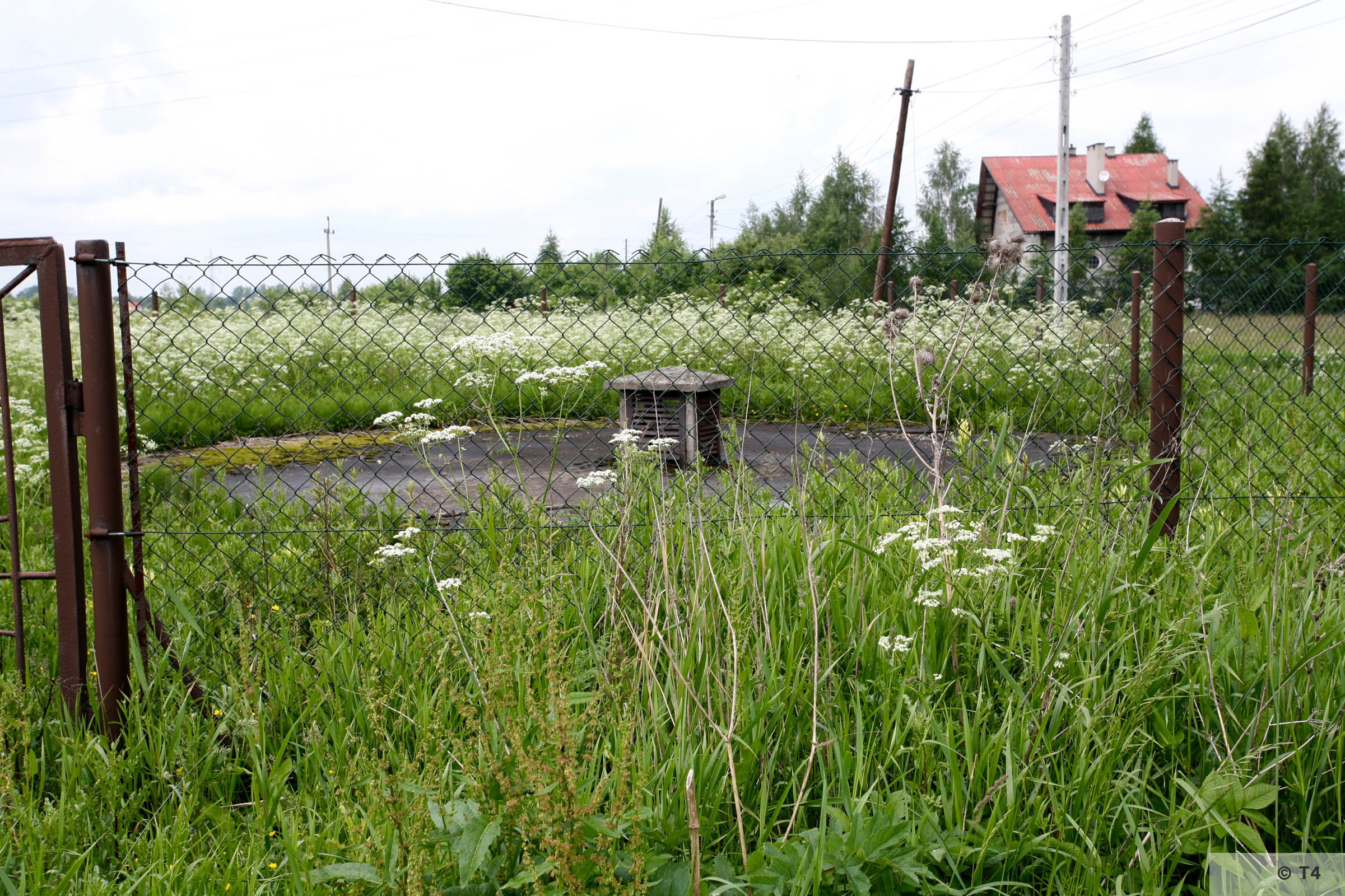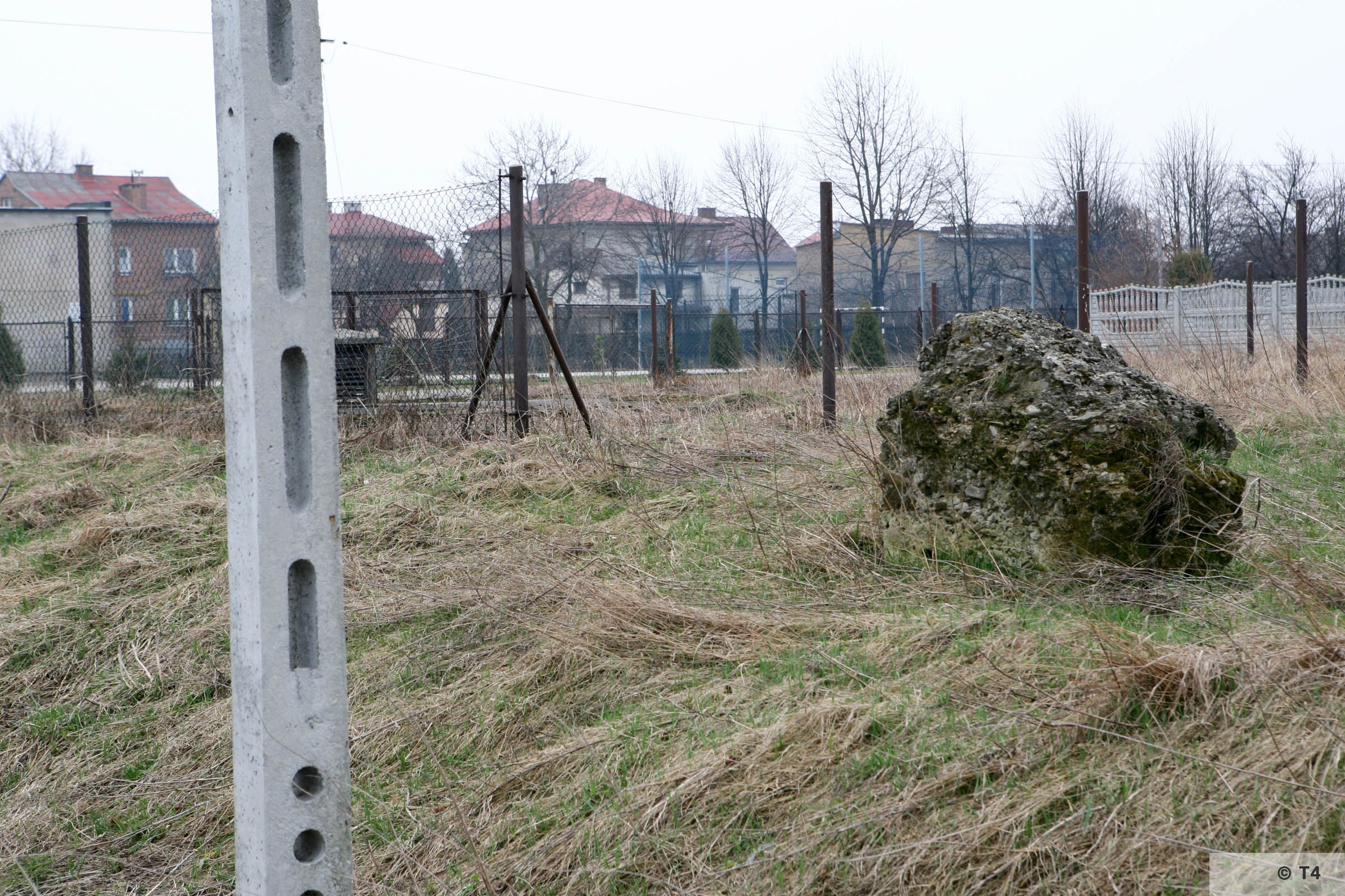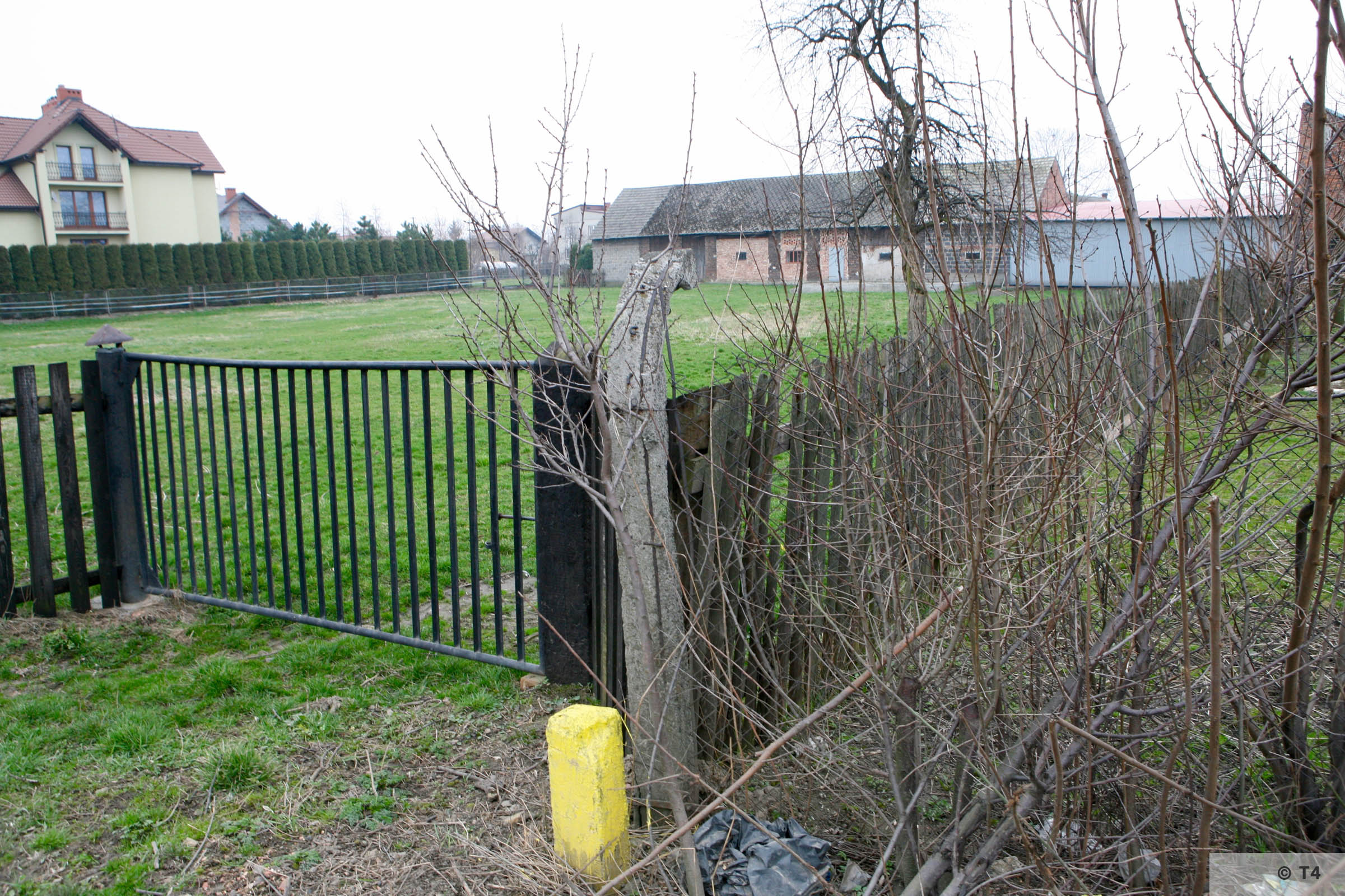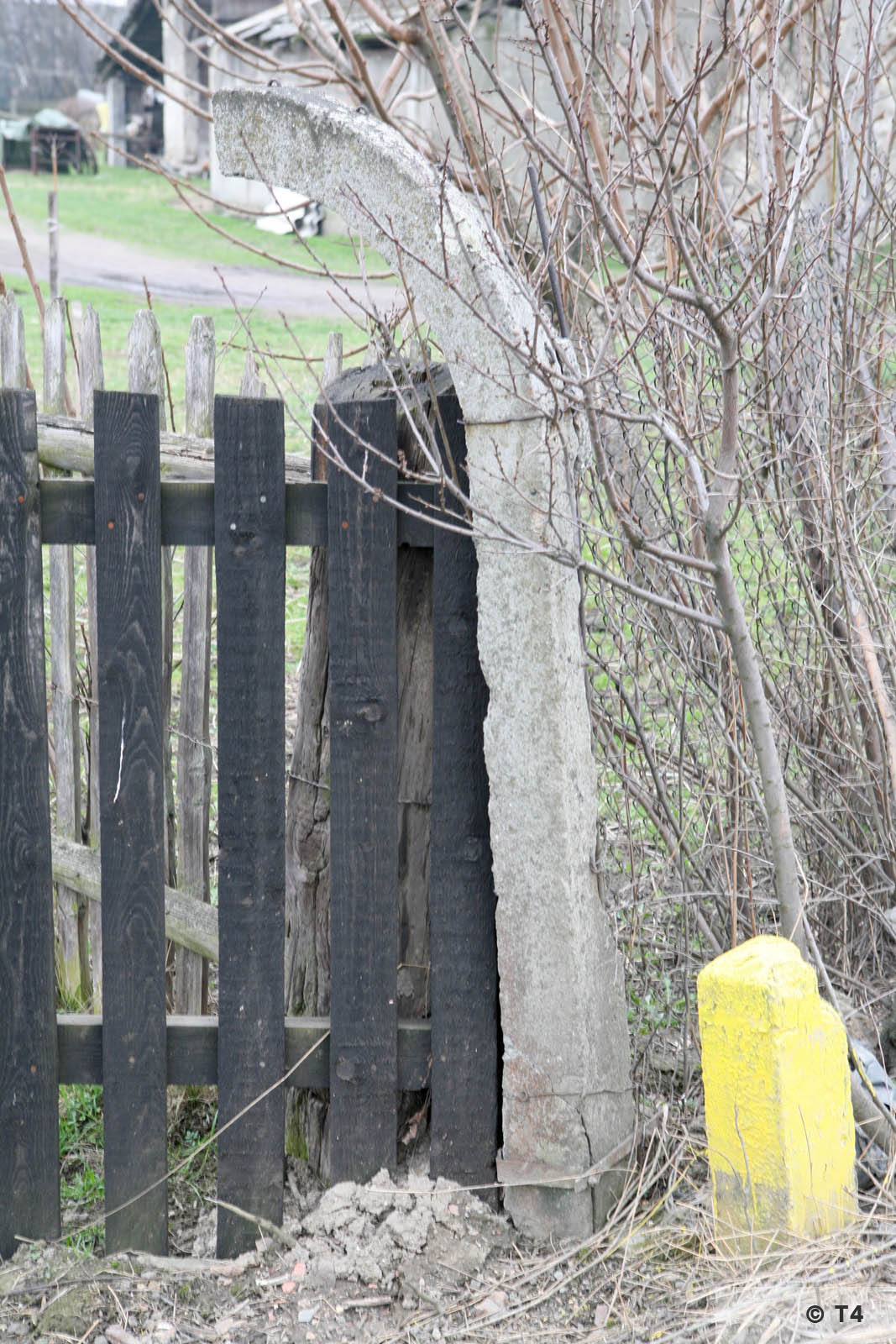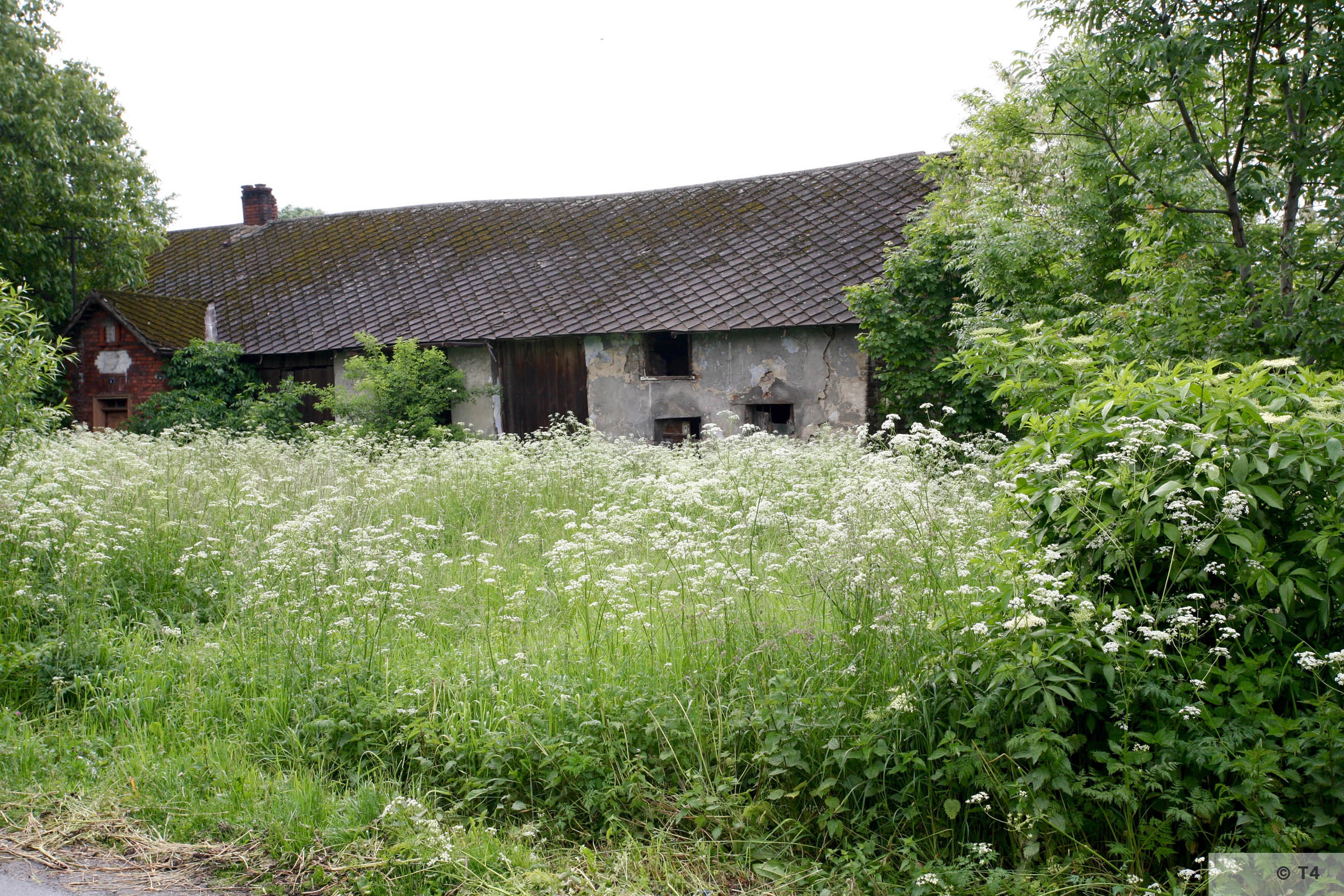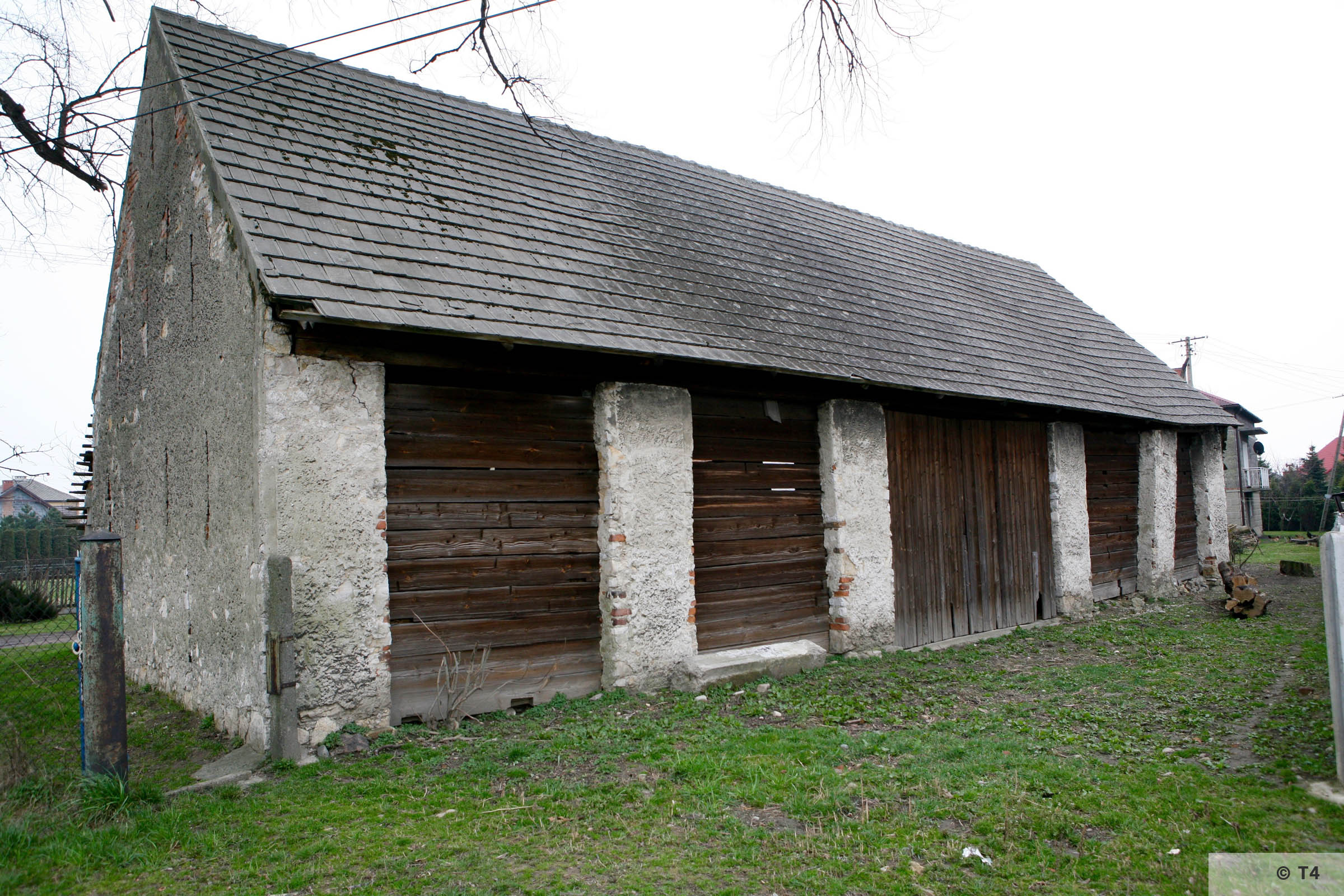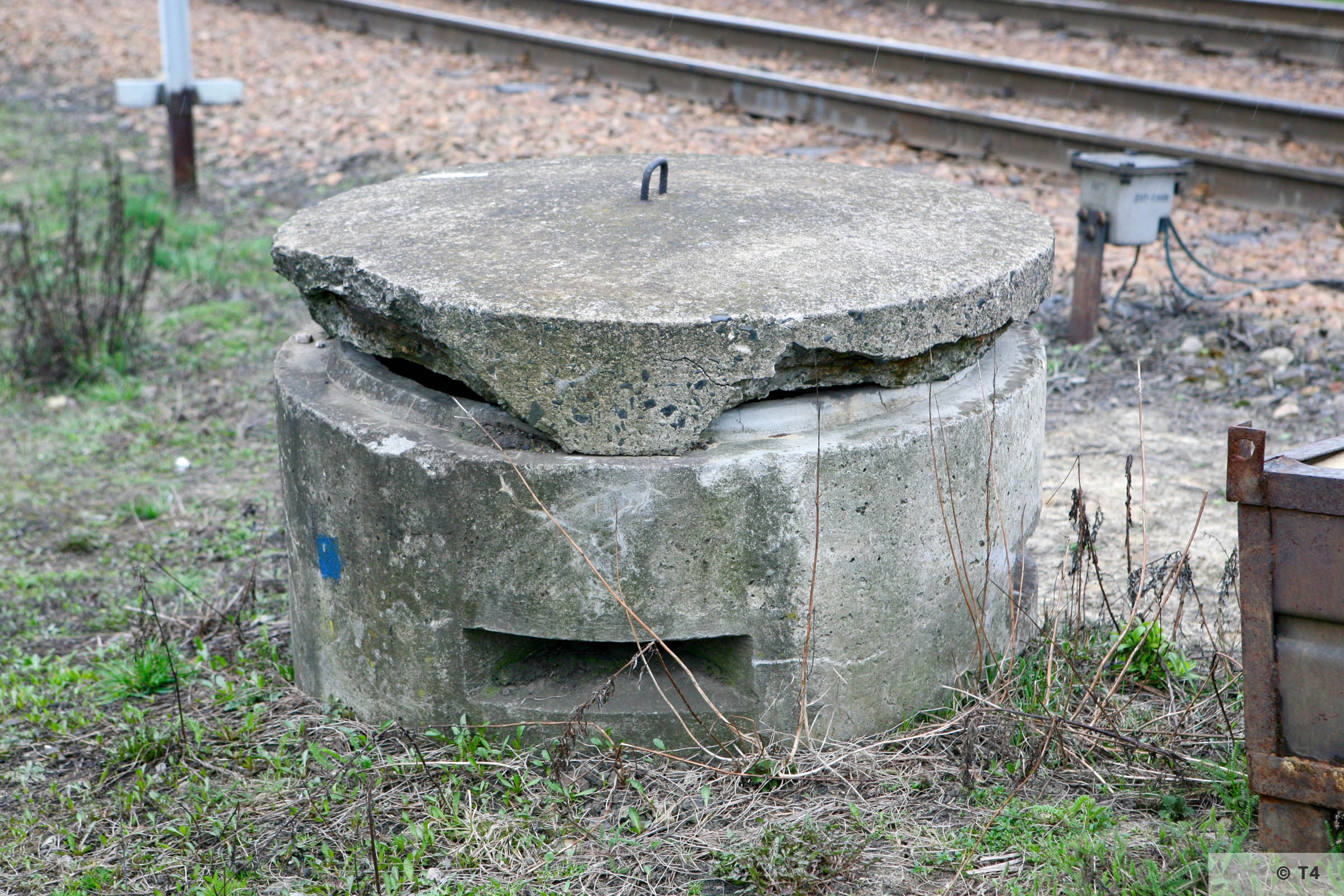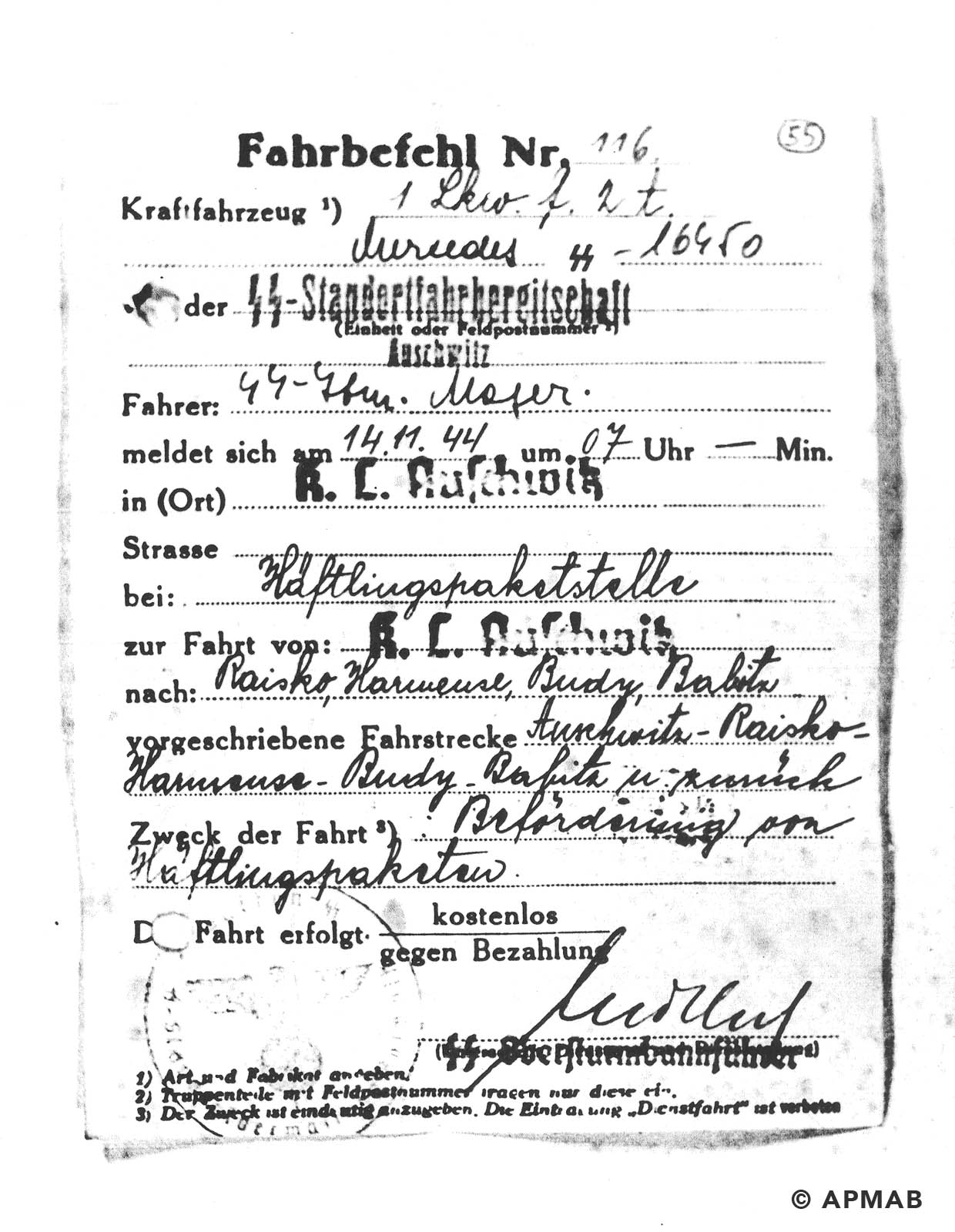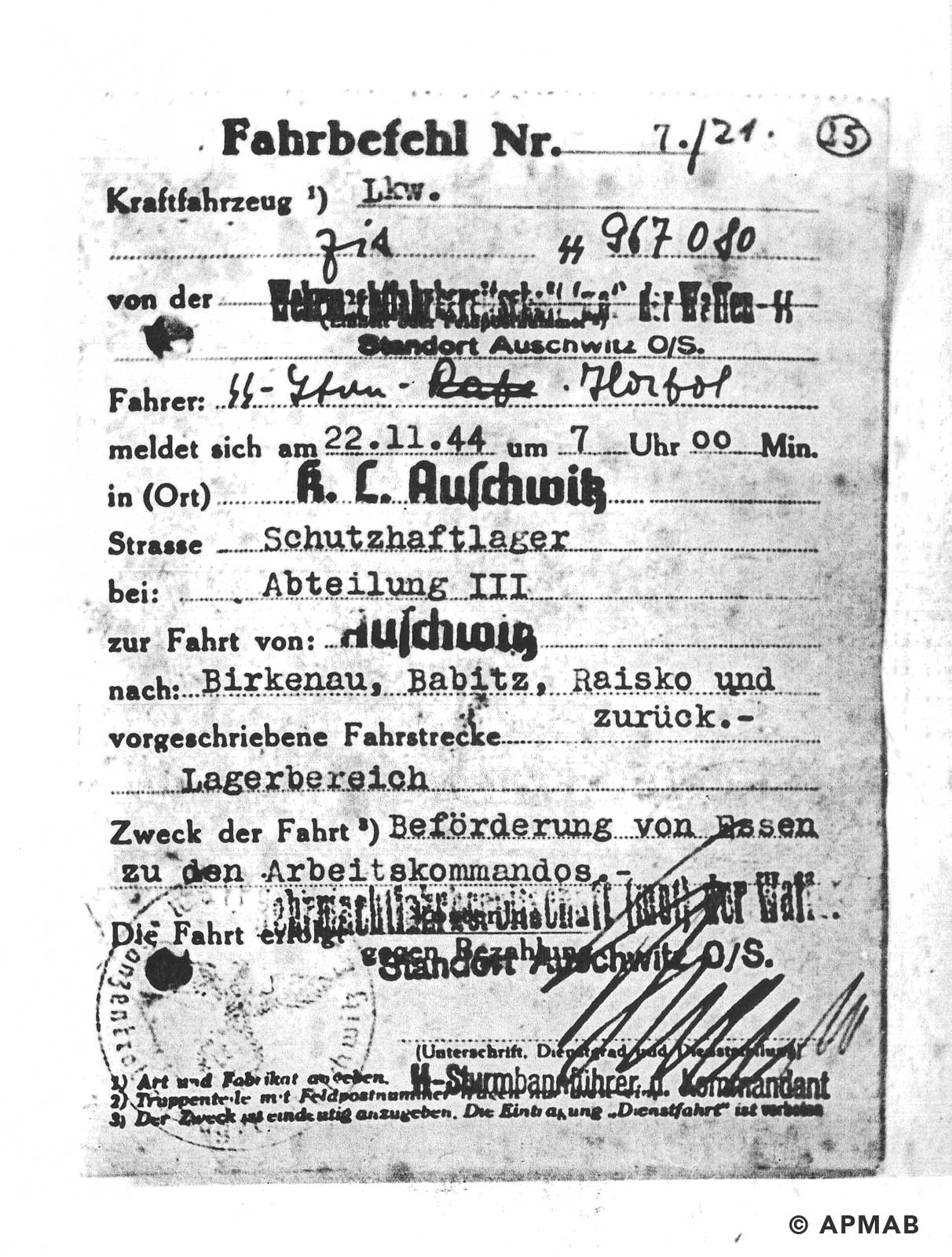Wirtschaftshof Babitz
Commandant of the camp
SS-Oberscharführer (?) Rosenoff
SS Aufseherin Erna Kuck
SS Aufseherin Johanna Bormann
Number of SS Guards
Unknown. Estimated 30 SS guards from the Landswirtschaftskompanie of the SS-T.-Sturmbann Auschwitz. Predominantly Germans and Volkdeutsche from Poland, Romania, Lithuania and Czechoslovakia.
Work type
Agriculture: Agricultural work on an SS farm.
Employer
Auschwitz concentration camp until February 1942
Landwirtschaft des Auschwitz O/S from February 1942
SS-WVHA/Amt W V; Land-, Forst- und Fischwirtschaft from February 1942
Sub camp buildings
The female prisoners were housed in an old school.
The male prisoners were housed in wooden barracks specifically built for the sub camp.
Number of prisoners
Around 360 male and female prisoners.
Female camp housed about 200 prisoners. Estimated at 17 January 1945 as 100.
On 17 January 1945 159 male prisoners.
Nationality of prisoners
Female sub camp: Poles, Jews, Soviets.
Male sub camp: Poles, Jews of all nationalities and Soviets.
Period of camp existence
March 1943 – 17 January 1945
Dissolution / Evacuation of the sub camp
At the end of July 1944 the female prisoners of Polish nationality were transferred back to Auschwitz II-Birkenau; the male prisoners and remaining female prisoners were evacuated on 17 January 1945 with the prisoners from the main Auschwitz camps.
Dates of site visits by Tiergartenstrasse4 Association
June 2006, November 2006 and March 2007
Memorialisation
On the front wall of the school building in Babice there is a metal plaque erected in 2004 with an inscription in Polish. There is also an information board at the entrance to Auschwitz II-Birkenau erected by the Polish population of the former Interessengebiet in April 2001.
Explore more
The History
The history of the companies and the places prisoners worked, the sub camps, the SS guards and memorialisation of the sites.
The History of the Landwirtschaft des Auschwitz O/S
The development of the agricultural economy in the vicinity of the Auschwitz camp, SS-Reichsführer Heinrich Himmler himself had prioritized. He was a farmer by profession, and even before the war had ordered the establishment of concentration camp farms (for example, in Dachau the plantation farming of herbs and also gardening). In November 1940, the Auschwitz camp commandant, Rudolf Höss gave Himmler a verbal report on the development of the Auschwitz concentration camp. He presented all of the difficulties encountered during the establishment of the camp and the further expansion of the camp. The meeting was also attended by the office of III D (Agriculture, Forestry, Handicrafts) of the WVHA, SS-Sturmbannführer Heinrich Vogel.[1] It was well known that Himmler did not like to listen to the complaints of his subordinates; Höss mentioned in his diary: “Interest by him (Himmler) was increased when I started talking about the entire area and explained the plans. Changed immediately. He was greatly interested in the plan and gave instructions one after another and noted down everything that was to be built on the land. Auschwitz is to be the agricultural experimental station for the east. There are opportunities which we have not had yet in Germany. … Every agricultural discipline needed to be there. They are to create branches of the great laboratories for plant breeding. Breeding cattle of all breeds and types is required. Vogel is to immediately source experts. Clean ponds, recover land, build embankments along the Vistula River (…). In the near future he wants to see everything in Auschwitz. They further discussed their plans for the agricultural area down to the smallest detail, until the adjutant on duty told them he was to meet important persons, who had been waiting for a long time.” [2]
Implementation of these plans gained momentum after the first visit by Himmler to Oświęcim on March 1, 1941. During the visit and inspection of the Auschwitz concentration camp Heinrich Himmler was accompanied by SS officers from the camp but also Gauleiter of Upper Silesia SS-Brigadeführer Fritz Bracht, Obergruppenführer Ernst Schmauser, SS-Oberführer Glücks, leaders from the district and leading representatives of IG Farben. After the visit to the camp and its surrounding Interest Area (Interessengebiet) Himmler gave the following orders to Höss:
- expand the Auschwitz camp to a capacity of 30,000 prisoners,
- build in the village of Brzezinka, a second camp for 100,000 prisoners of war, c) support the planned construction of industrial plants on land provided for IG Farben at Dwory near Oświęcim, and provide about 10,000 prisoners,
- develop the whole Interessengebiet, especially for agriculture and livestock.[3]
This area was large, covering about 40 square kilometres and before the war had been partly farmed by Poles. Adverse soil and climatic conditions, made the area ideal for experimenting on improvements in farming techniques that could be used in ecologically fragile areas of the east. A huge advantage of undertaking such a large agricultural experiment in the Auschwitz Interresengebiet was the availability of male and female prisoners from the Auschwitz concentration camp. [4]
In February 1942 a new department named the Landwirtschaft des Auschwitz O/S was created headed by SS-Obersturmbannführer Joachim Caesar.[5] Dr Caesar reported to the head of the newly created SS-WVHA/Amt W V; Land-, Forst- und Fischwirtschaft, SS-Sturmbannführer Heinrich Vogel. Certain day to day administration functions of the farming camps remained with Auschwitz. With the administrative changes in Auschwitz in the Autumn of 1943 the day to day administration of the Interessengebiet came under the authority of Auschwitz II-Birkenau. [6]
The farming camps of Auschwitz had their own guard unit named the Landswirtschaftskompanie of the SS-T.-Sturmbann Auschwitz. The SS guards were assigned from the Landswirtschaftskompanie of the SS-T.-Sturmbann Auschwitz to each individual farm for guard duty. The Landswirtschaftskompanie was made up of men from the 9/ SS-T.-Sturmbann Auschwitz and later the 2.Stabskompanie/ SS-T.-Sturmbann Auschwitz. The first head of the Landswirtschaftskompanie was SS Hauptsturmführer Reinhard Thomsen. His successor was Hauptsturmführer Ziemssen. Thomsen was the deputy and adjutant to the chief of the Landwirtschaft des Auschwitz O/S, Dr Caeasar. The Spiess of the Landswirtschaftskompanie was SS Hauptsturmführer Becker. The company headquarters of the Landswirtschaftskompanie was originally at the experimental station in Rajsko. Later it was moved to SS barracks in Auschwitz I. By the Autumn of 1944 there were approximately 300 men in the Landswirtschaftskompanie. [7]
Reinhard Thomsen described the creation of Landwirtschaft des Auschwitz O/S and Landswirtschaftskompanie in post war testimony, “ As I came to Auschwitz in May 1940 the camp was still being built up. My task from the beginning and thereafter was to build up the agricultural department and subsequently get the Auschwitz agriculture operational. This seemed necessary in particular because the Poles in the immediate vicinity of the camp were to be resettled and the fields would therefore lie fallow. The idea for setting up a special Landwirtschaftbetriebe of the camp could have come from the commandant Höss, as he was strongly interested in agricultural matters. The workforce for agricultural work I sought first from the Wachkompanien. At the beginning under my leadership were only SS. After, sometime, in the spring or summer of 1941 my department was given prisoners for use as workers. The entire area was split up into departments:
- Poultry farm (Harmense)
- Fish Farming (also in Harmense)
- A forest department
- A sheep farm (but after a short time this was closed as it did not pay)
- A nursery (Rajsko)
- A tree nursery
- Three agricultural areas (Budy, Broszkowitz)[8]
- A plant research station (in Rajsko. This was set up as a kind of secret department under Dr Caesar)
The prisoners that worked for the different agricultural departments were at first brought from the Auschwitz main camp to their workplace and in the evening brought back. When in early 1942 Dr. Caesar came to Auschwitz and took over the leadership of the agricultural department the prisoners assigned to agricultural work were withdrawn and were brought to barracks at their workplace.” [9]
From the 7th April 1941 to 12th April 1941 (and in the case of Pławy 8 March 1941) the Germans resettled the population from the villages in the Interessengebiet that were to be used as farms: Babice (in German Babitz), Brzezinka (in German Birkenau), Harmęże (in German Harmense), Rajsko (In German Raisko) and Pławy (In German Plawy).[10]
Residents were only able to take their movable property, excluding farm machinery and tools, and were transported to the train station at Oświęcim where they were sent to the General Government. The cattle and farm equipment were taken over by the Auschwitz concentration camp. Only a few people – mostly railroad workers and miners – were allowed to live in the neighbouring villages.
Zofia Knapczyk recalled the resettlement in the village of Babice, “After resettlement of the villages lying close to Oświęcim, we got an apartment at the signalman´s box, due to the fact that my husband worked on the railway. The signalman´s box was located at the intersection of the roads leading to Babice and the road leading to Oświęcim in the direction of Katowice. My husband was a signalman. In the month of March, on Easter Saturday came to the village a group of SS men, instructing all residents to leave the village. Railwaymen were sent to the town of Oświęcim to abandoned Jewish homes; the rest were taken on carts to nearby villages that had not been displaced. (….)”[11]
Most of the empty houses were given to the civilian employees of IG Farben. Some houses had the IG logo painted on them with oil paint.[12]
[1] Piper, Franciszek, Zatrudnienie więźniów KL Auschwitz, Oświęcim 1981, p. 188-189.
[2] Autobiografia Rudolfa Hössa, komendanta obozu oświęcimskiego, Warszawa 1989, p. 274.
[3] Czech, Danuta, Kalendarz wydarzeń w KL Auschwitz, Oświęcim 1992, p. 52.
[4] Lasik, Aleksander, Struktura organizacyjna obozu [in:] Auschwitz 1940-1945. Węzłowe zagadnienia z dziejów obozu, vol. I: Założenie i organizacja obozu, Edit. Wacław Długoborski, Franciszek Piper, Oświęcim 1995, p. 213.
[5] Joachim Caesar, SS-Obersturmbannführer, born. May 30, 1901 in Boppard, Doctor of Agricultural Sciences, a member of the NSDAP from 1 September 1931 (No Party: 626,589) and the Allgemeine-SS from 27 June 1933 (Registration No: 74704), to 1 April 1937 was an officer of the Central Office Affairs of the SS Race and Settlement (SS-Rasse-und Siedlungshauptamt, R.u.SHA). From 2 August 1941, employed in the Training Department of the Waffen-SS (Schulungsamt der Waffen-SS), where he was seconded to the Office of Human Resources Recruitment Agency of the Waffen-SS (Ergänzungsamt der Waffen-SS). From 16 February 1942, he was an SS officer in the WVHA assigned as manager of the farms in Auschwitz. From: BDC, personal file of Joachim Caesar.
[6] StA Ludwigsburg StAL EL 317 VI_Bu 881, p. 36-38.
[7] StA Ludwigsburg StAL EL 317 VI_Bu 881, p. 29.
[8] Budy, Plawy and Birkenau.
[9] StA Ludwigsburg StAL EL 317 VI_Bu 885. Testimony of Reinhard Thomsen 15 March 1962.
[10] StA Ludwigsburg StAL EL 317 VI_Bu 881, p. 26.
[11] APMAB. Zespół Oświadczenia, testimony of Zofia Knapczyk, Vol. 48, p. 120.
[12] APMAB. Zespół Oświadczenia, testimony of Zofia Knapczyk, Vol. 48, p. 120.
The History of the Sub Camp Wirtschaftshof Babitz
In the years 1941-1942 Aussenkommandos of male and female prisoners were brought to Babice on a daily basis to work the fields and tend the animals. Groups of women prisoners also grew Kok-Sagiz for the plant experimental station in Rajsko.
There was also an Aussenkommando called the Kommando Mühle Babitz (and from 1943 Kommando Mühle Auschwitz) who were brought daily from the Auschwitz main camp to work in the flour mill in Babice. Another Aussenkommando from the main camp called the Mehlfahrer, delivered flour from the Babice warehouse to bakeries, hospitals, kitchens, etc. under the escort of two SS men. These Aussenkommandos were never housed in the sub camp in Babice. [1]
In March 1943, a sub camp was set up in the village of Babice. The work of the prisoners was described by former prisoner Anna Wiśniewska, “Kommando Babitz, which included Poles, Russians and Ukrainians, worked in four groups. One group consisted of 25 women. It’s Kommandoführer was an SS man from the Ukraine called “Black”. The women in this kommando were Ukrainians themselves. They worked only with compost and manure, bringing it and scattering it in the fields. None of the Poles wanted to work in this group, because “Black” tormented the prisoners of other nationalities. He threw my pitchfork at me and just a quick swerve spared me from death. The Kommandoführer of the second group was an SS man called “Sour” The number in his group was 100 prisoners. The Kommandoführer of the third group was the SS man Kales, this group had more than 60 women. The fourth group consisted of about 15 prisoners, and was employed looking after the cows. There were 30 cows and two bulls. The cows were housed in a large wooden shed standing in the yard. Work in the second and third groups was dependent on the season and was related to cultivation. In the spring we collected stones from the fields, cut thistles, planted potatoes, cabbage, beet and oilseed rape (…). In the summer we worked at haymaking and the harvest (…). We were brought in the autumn and winter to demolish houses after the Polish population of Babice had been expelled from the area….” [2]
Teresa Wicińska who was a prisoner in the Babitz sub camp from April 1943 to June 1944 described the work, “We were employed in the construction of roads, the demolition of buildings formerly inhabited by people who had been displaced and we also did some agricultural and drainage work. In this camp, just behind the wire separating them from the women’s camp, there was a men’s kommando, about one hundred prisoners including Poles, Jews of all nationalities and Russians. The women and men worked on a farm…. The work was difficult, especially for the intelligentsia who were not used to it. The guards harboured a particular hatred towards the intelligentsia.”[3]
The infrastructure of the camp was basic. The female prisoners lived in a school building (map reference 2), the male prisoners in a wooden barrack (map reference 2) nearby the school building. Other buildings were constructed inside the barbed wire fenced area of the camp including: barns, a stable (map reference 7), storage sheds (map references 9,10), a shed for harnesses (map reference 12) and many other farm buildings.
The SS Aufseherinnen who supervised the female prisoners lived in the school building while the SS guards lived in houses in the village of Babice. [4]
On the food for the prisoners in the sub camp Babitz the former prisoner Anna Wisniewska testified, “Food was brought to us to from Birkenau. Breakfast consisted only of black coffee, lunch was soup, called by us ‚fancy‘ consisting of nettles, turnip, wet biscuit crumbs and cake taken from the suitcases of the Jewish transports. We were given soup made from cabbage and potatoes. In the evening after returning from work each prisoner received a slice of bread with a slice of sausage, a spoon of jam or margarine and black, bitter coffee.”[5]
The Jewish prisoners of the male camp were treated even more harshly than the female prisoners, “In the men’s camp, the Jews were treated exceptionally cruelly and ground down, and no one was any different – all the men were treated inhumanly. The Jewish prisoners died sooner because they had already been broken mentally. The corpses of the murdered and the deceased were transported by truck to the crematorium in Auschwitz. Trucks also took away prisoners who had lost their strength and were no longer fit for work.” [6]
Even after the establishment of the Babitz sub camp, Arbeitskommandos came daily to work at the farm in Babice from Auschwitz II-Birkenau, including Kommando Zippenpfennig. [7]
[1] Testimony of Henryk Głuch from 20 December 1947. Testimony viewed on 11 August 2019. https://www.zapisyterroru.pl/dlibra/publication/3390/edition/3371/content.
[2] APMAB. Zespół Oświadczenia, testimony of Anna Wiśniewska, Vol. 47, p. 89-90.
[3] Testimony of Teresa Wicińska from 16 June 1947. Testimony viewed on 11 August 2019. https://www.zapisyterroru.pl/dlibra/publication/3390/edition/3371/content.
[4] BA Ludwigsburg B162/9960, p. 151.
[5] APMAB. Zespół Oświadczenia, testimony of Anna Wiśniewska, Vol. 47, p. 89.
[6] Testimony of Teresa Wicińska from 16 June 1947. Testimony viewed on 11 August 2019. https://www.zapisyterroru.pl/dlibra/publication/3390/edition/3371/content.
[7] StA Ludwigsburg StAL EL 317 VI_Bu 882, p. 301.
Literature:
Zięba, Anna, Wirtschaftshof Babitz. Podobóz przy majątku Babice, [in:] Zeszyty Oświęcimskie [1969] Nr 11, p. 69-82.
The SS Guard Unit
Little is known of the SS guards. One guard stood out for his brutality in the male camp, “SS man Kommandoführer Otto Scherbinski was distinguished among the men’s camp guards in terms of his cruelty. He is a man of medium height, with crooked legs. He beat the male prisoners, chased them around the blocks, and in the winter he told them to wash in cold water from the well.” [1]
The supervisors of the women’s Kommando were SS Aufseherinnen Erna Kuck and Johanna Bormann.
[1] Testimony of Teresa Wicińska from 16 June 1947. Testimony viewed on 11 August 2019. https://www.zapisyterroru.pl/dlibra/publication/3390/edition/3371/content.
Literature:
Zięba, Anna, Wirtschaftshof Babitz. Podobóz przy majątku Babice, [in:] Zeszyty Oświęcimskie [1969] Nr 11, p. 69-82.
The SS Guards
References:
Zppw-auschwitz.pl Zwiazek Polaków Pomordowanych w Auschwitz. List of 8,500 SS men in KL Auschwitz.
BA Ludwigsburg B162/2680 and B162/2679.
Zięba, Anna, Wirtschaftshof Babitz. Podobóz przy majątku Babice, [in:] Zeszyty Oświęcimskie [1969] Nr 11, p. 69-82.
IPN database of Auschwitz SS guards. https://truthaboutcamps.eu/th/form/60,Zaloga-SS-KL-Auschwitz.html.
The Evacuation of the Sub Camp Wirtschaftshof Babitz
In August 1944 the female prisoners of Polish nationality were sent back to Auschwitz II-Birkenau leaving only the Soviet and Ukrainian women.[1] After several days the Polish prisoners were transported from Auschwitz II-Birkenau to the camp of Elbingen in France. The Kommando of 159 male prisoners remained in the Babitz sub camp until January 17, 1945, when they and the remaining female prisoners joined the columns of prisoners leaving the Auschwitz complex.
[1] BA Ludwigsburg B162/9960, p. 156.
Literature:
Zięba, Anna, Wirtschaftshof Babitz. Podobóz przy majątku Babice, [in:] Zeszyty Oświęcimskie [1969] Nr 11, p. 69-82.
The Post War History of the Former Sub Camp Wirtschaftshof Babitz
The former school building which housed the female prisoners has survived. The building currently houses a local government kindergarten and accommodation. After the war the wooden barracks were dismantled possibly for emergency housing. The area is now a mixture of residential and farmland.
The Preservation Status of the Former Sub Camp Wirtschaftshof Babitz
The remains of the Wirtschaftshof Babitz sub camp are located at ul Różana in the village of Babice near Oświęcim. The former school building which housed the female prisoners has survived. On the ground floor there were rooms for the SS guards (living rooms for the SS-Aufseherinnen and a SS dining room) and rooms for prisoners on the first floor (map reference 1). The building currently houses a local government kindergarten and apartments. At the back of this building there are two one-story annexes: one of them (it´s roof is used as a terrace) was the SS dining room, while the other contained a kitchen and washrooms used in the winter.
Behind the building there was the main sub camp area, including the barracks where the male prisoners lived, barns, stables etc. These have not survived, apart from fragments of the bathhouse (map reference 3) and fire-fighting pool (map reference 4), which after the war was most probably converted into a cesspool.
The area which is now a concrete football pitch and playground served as the sub camp roll call area (map reference 21).
Memorialisation
On the front wall of the school building there is a metal plaque erected in 2004 with an inscription in Polish: “W LATACH 1943-1945 W TYM MIEJSCU ZNAJDOWAŁ SIĘ PODOBÓZ KL AUSCHWITZ W BABICACH. PAMIĘCI WIĘŹNIÓW I WIĘŹNIAREK KTÓRZY W NIM CIERPIELI I GINĘLI.” (IN THE YEARS 1943-1945 THIS PLACE WAS A FARM OF KL AUSCHWITZ IN BABICE. TO THE MEMORY OF PRISONERS AND THE PRISONERS WHO SUFFERED AND DIED).
There is also an information board at the entrance to Auschwitz II-Birkenau erected by the Polish population of the former Interessengebiet in April 2001.
Auschwitz-Birkenau State Museum Site Visit
The Auschwitz-Birkenau State Museum visited the site of the former sub camp Babitz on 14 August 1959 and took three photographs of the camp area including the former school building that housed female prisoners.

